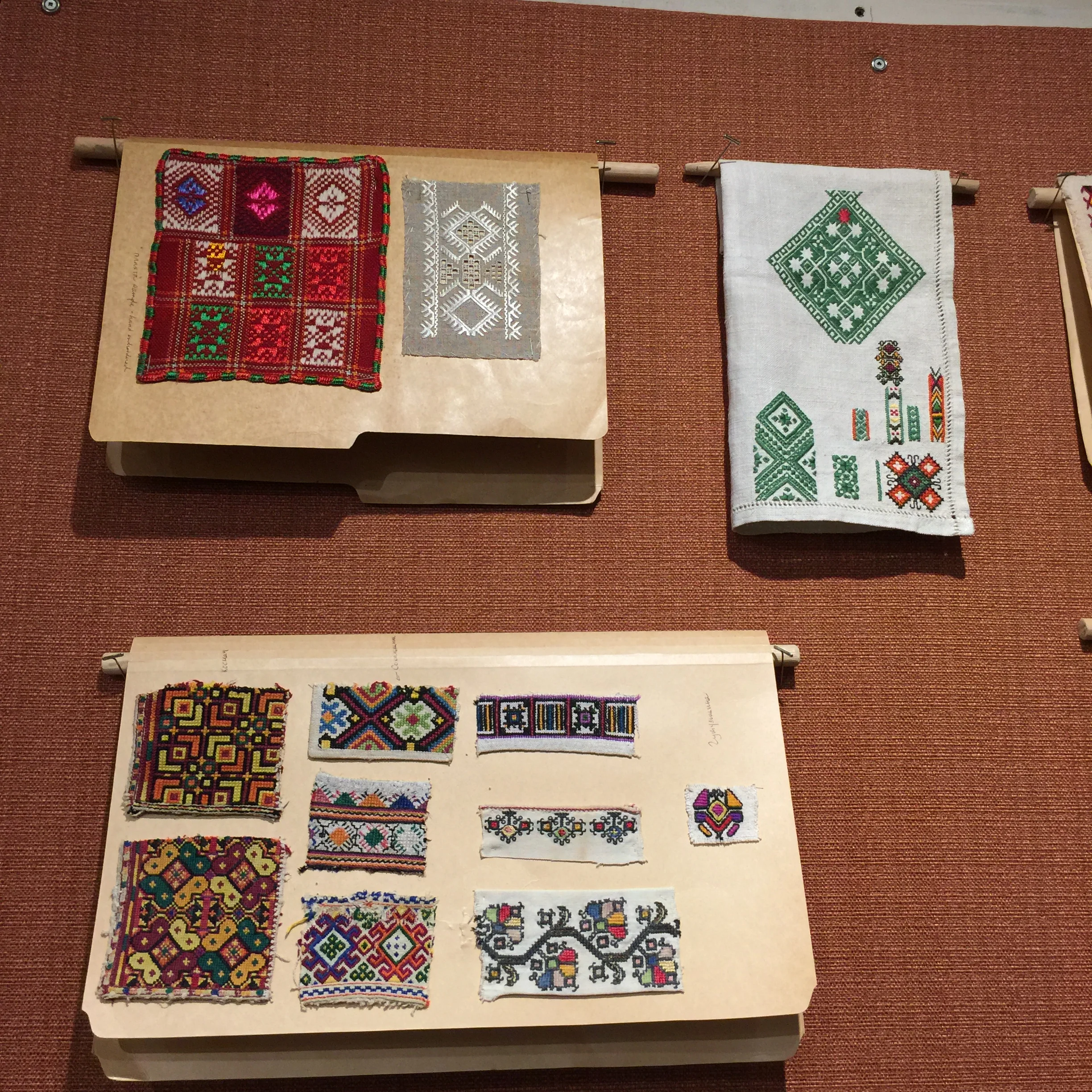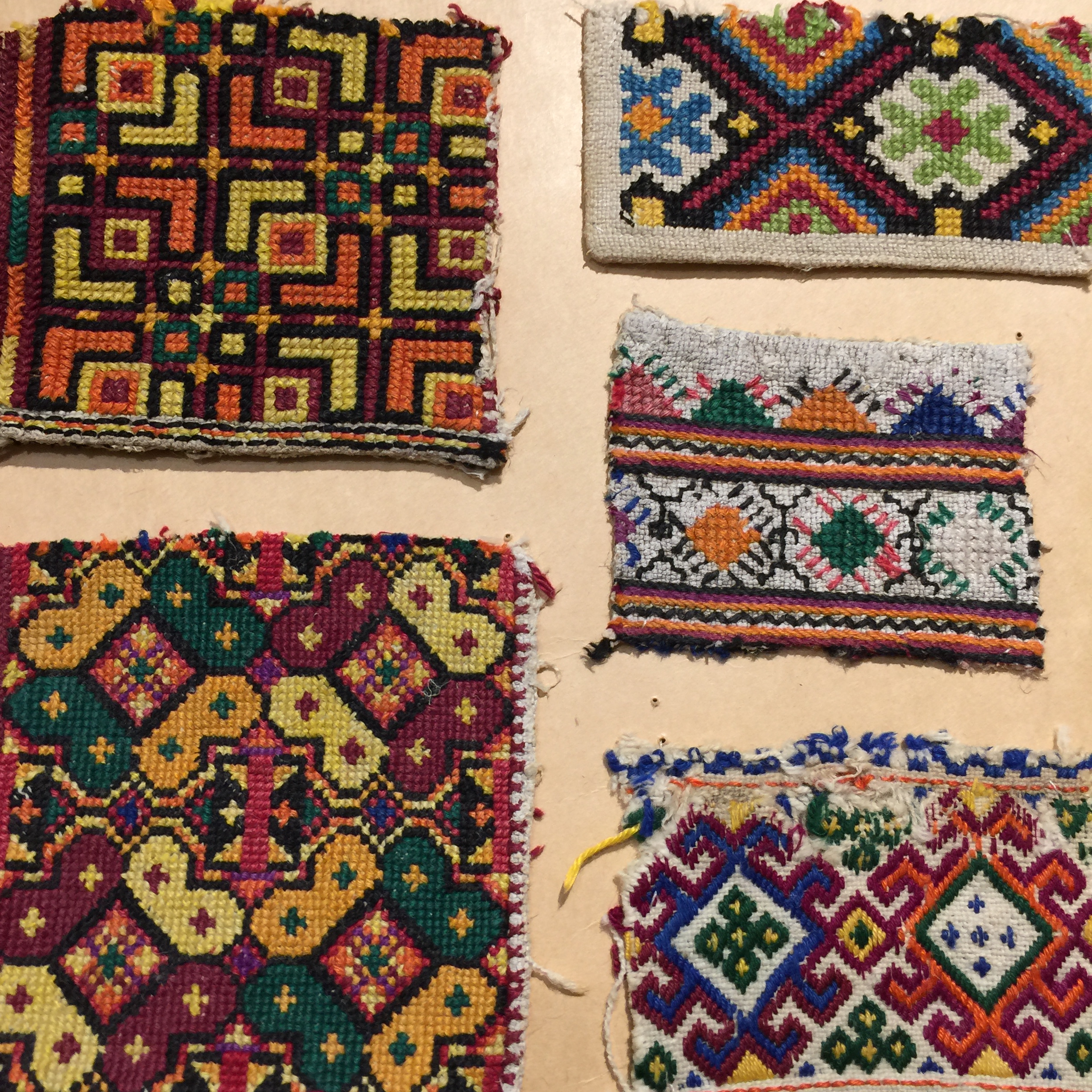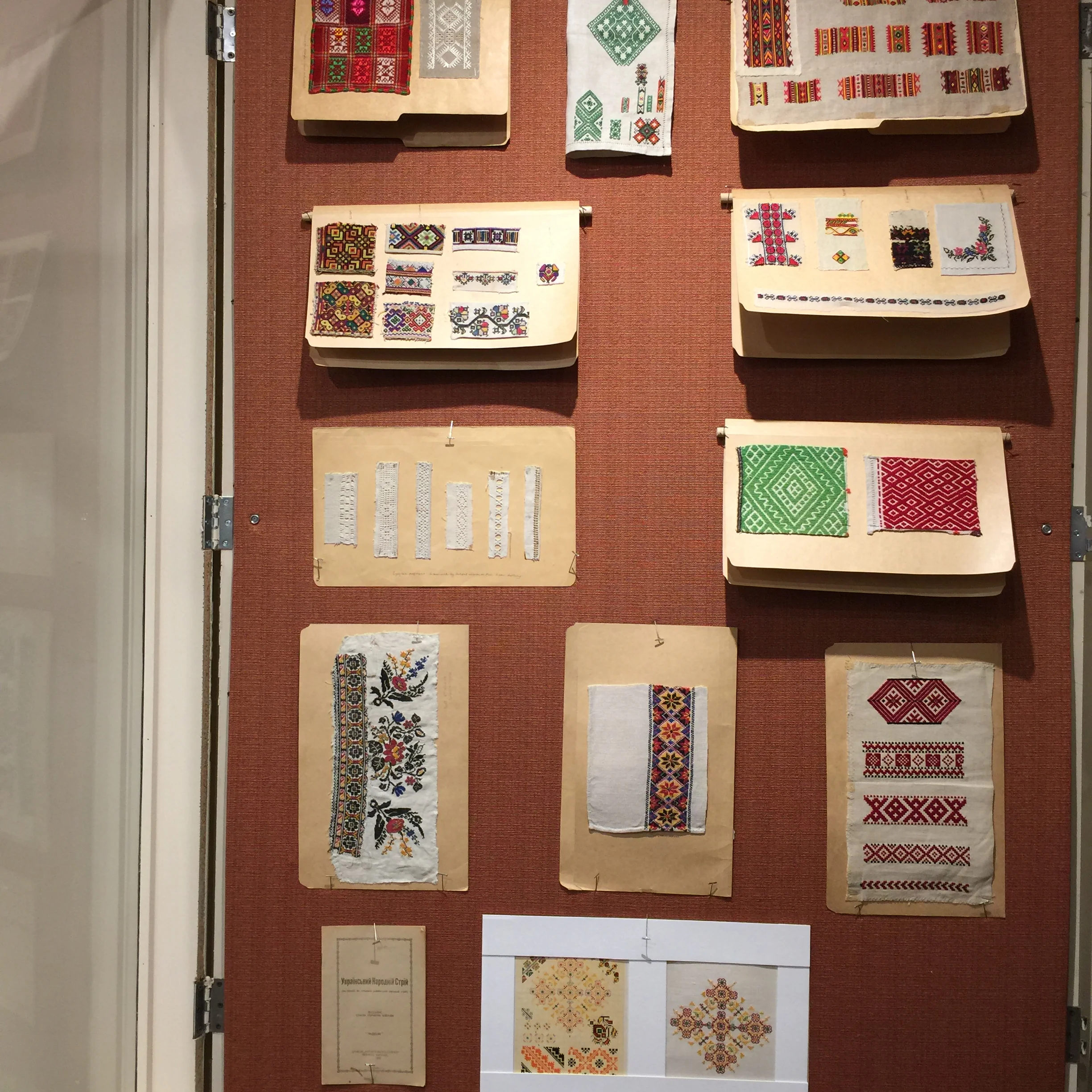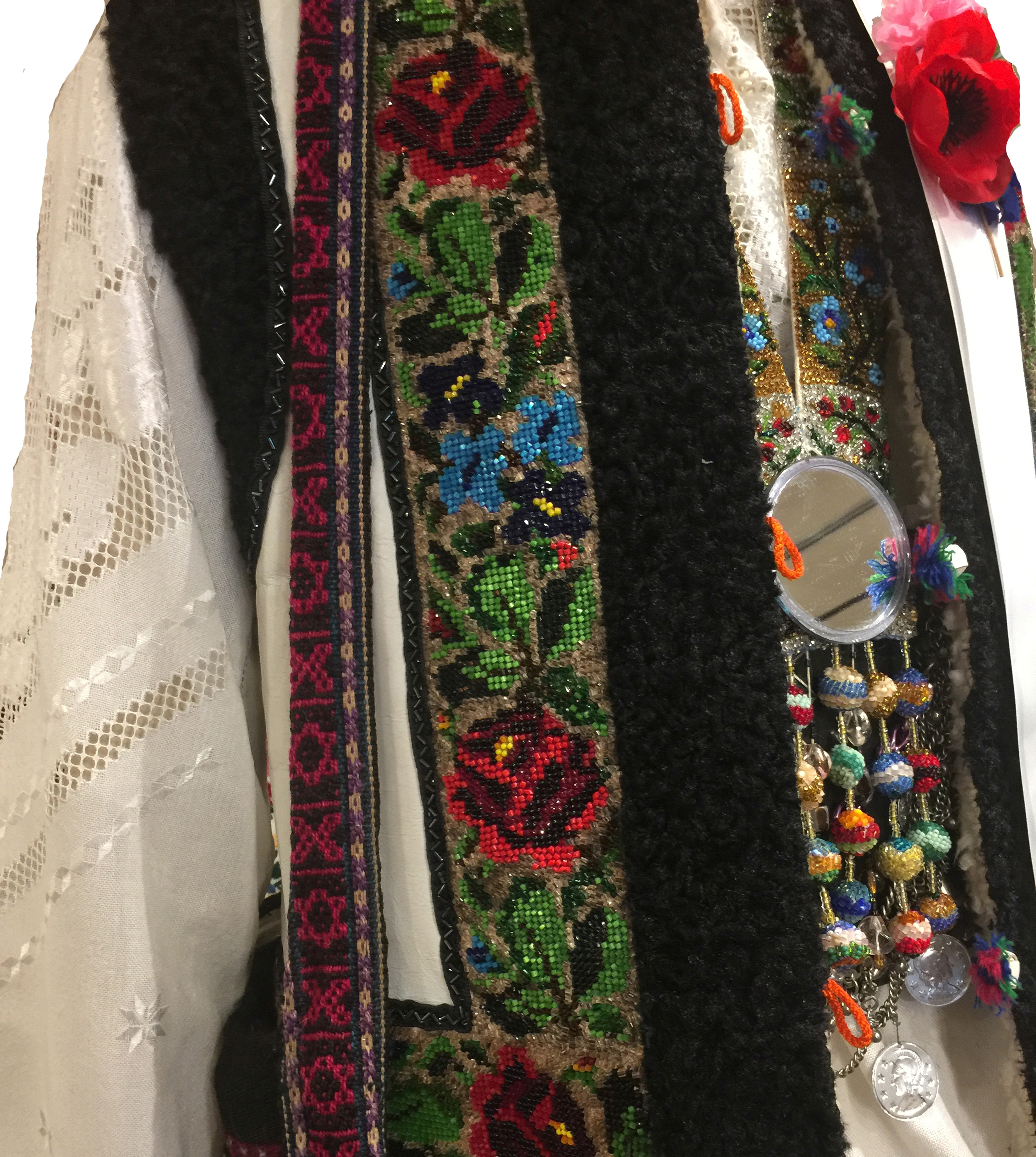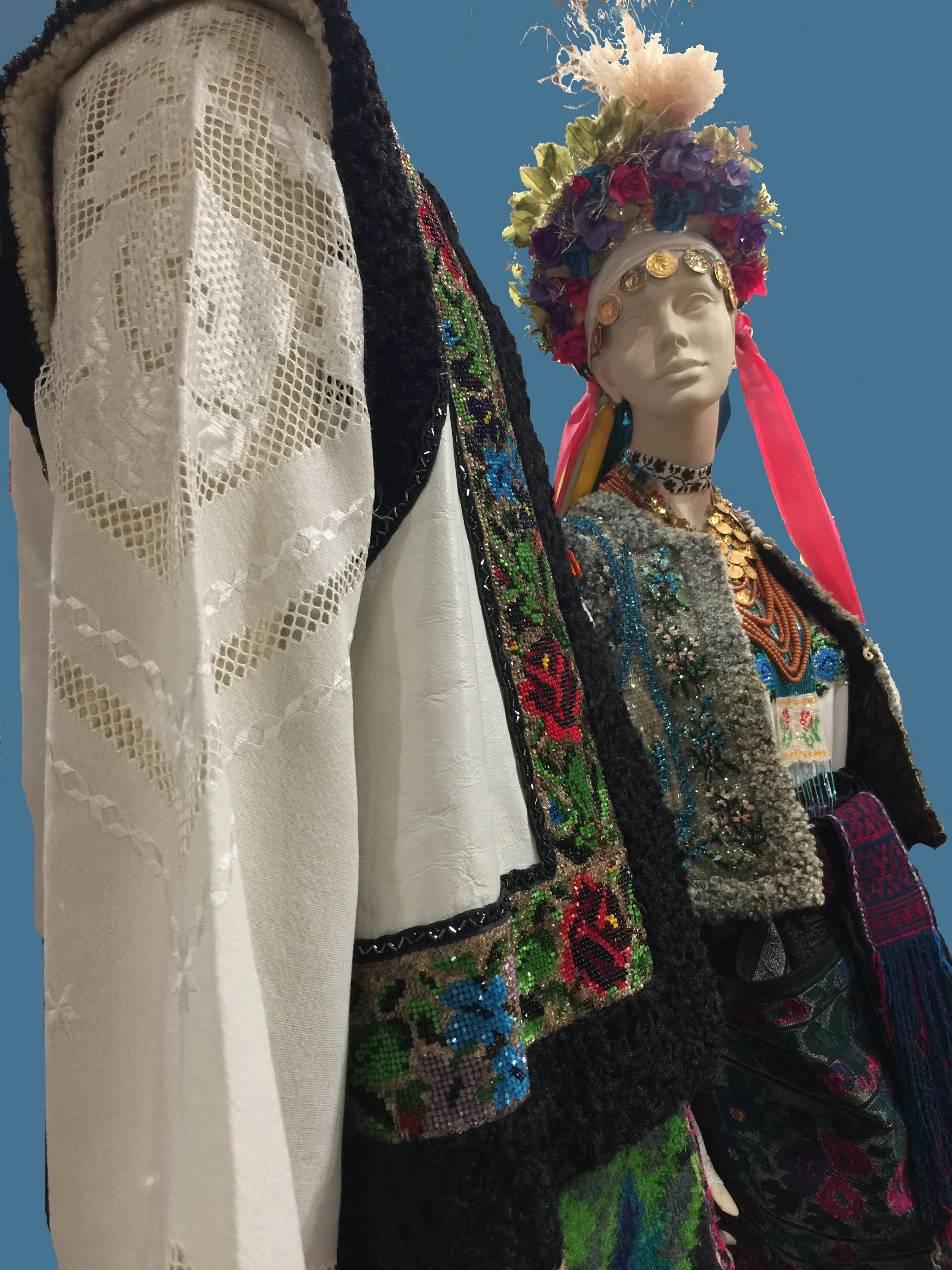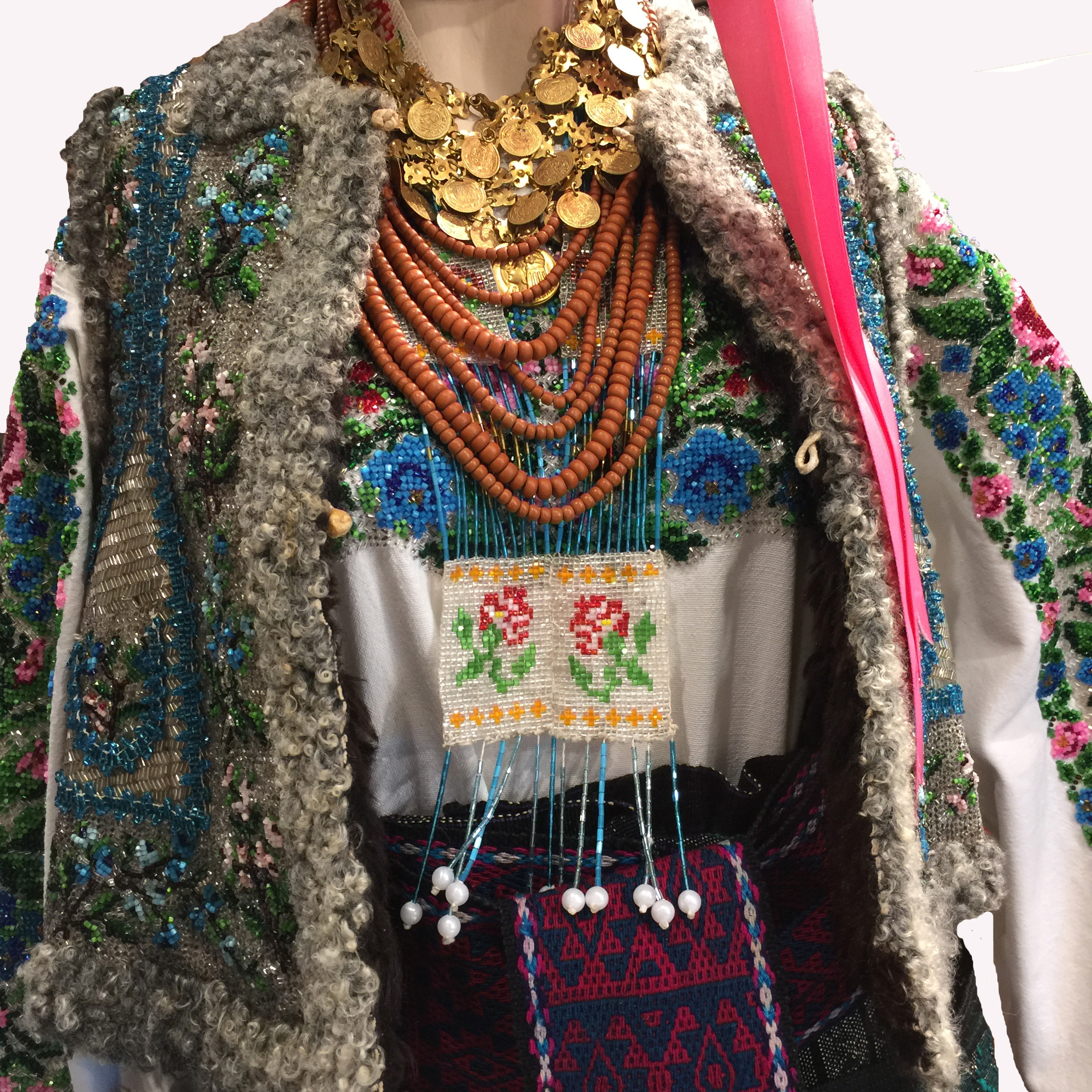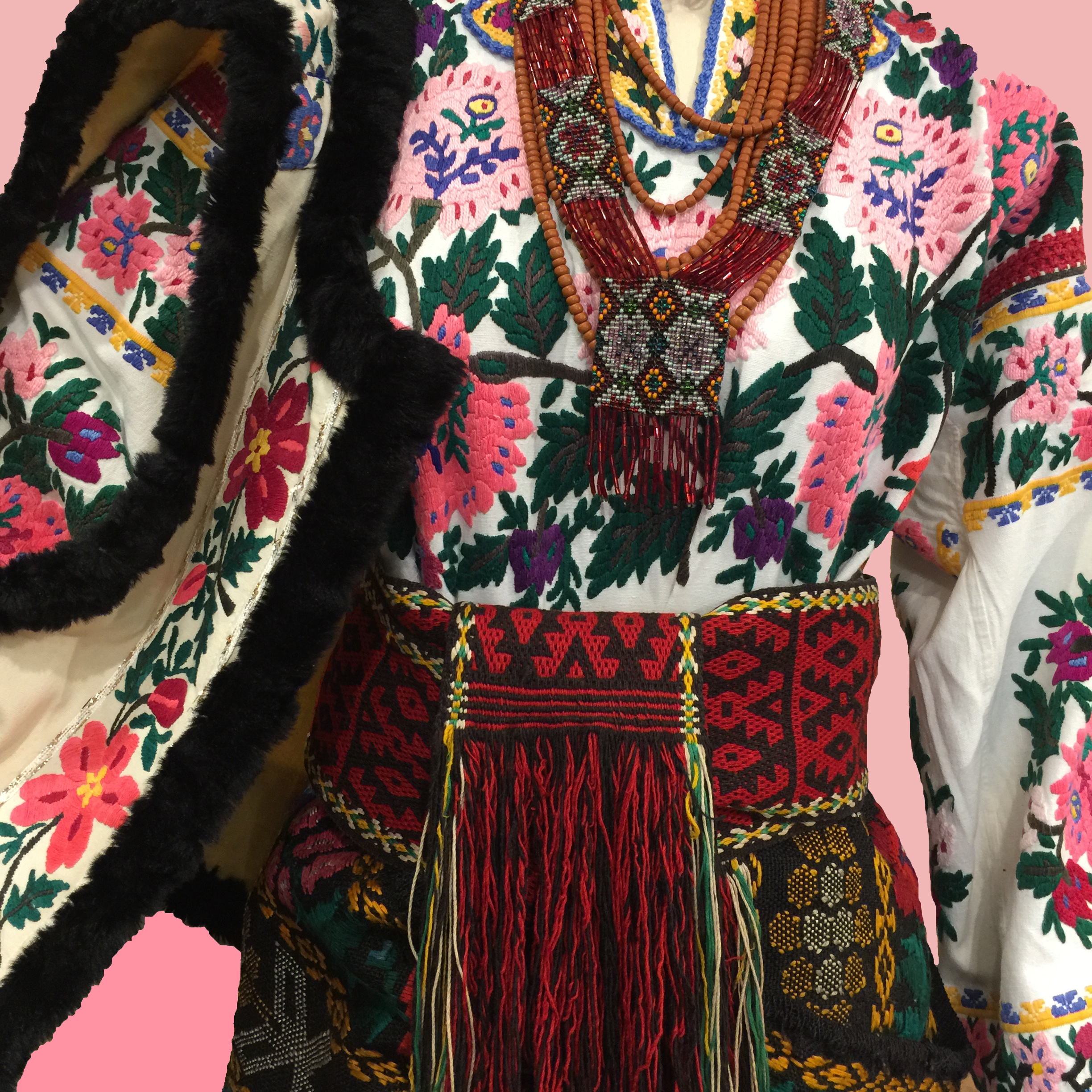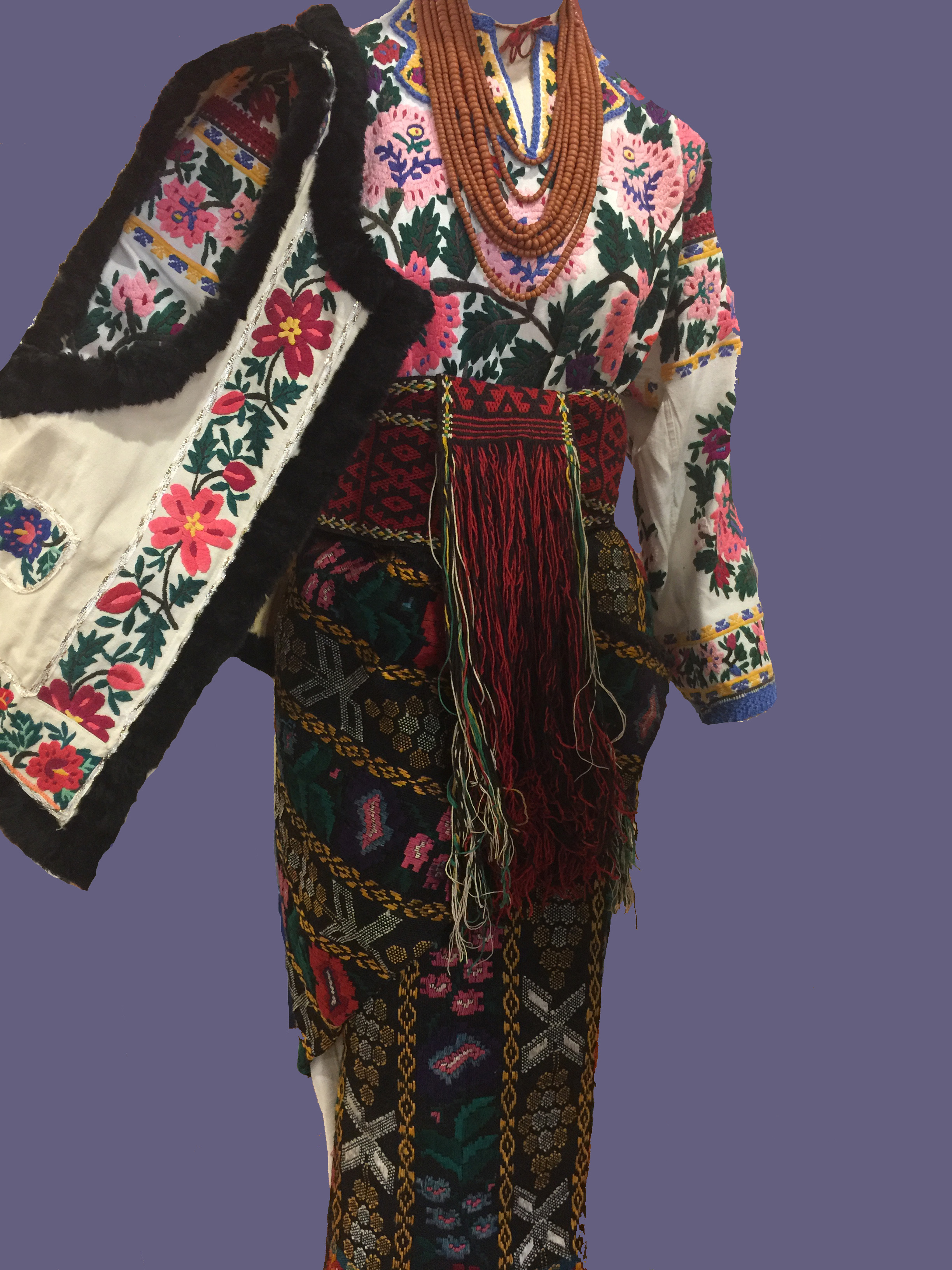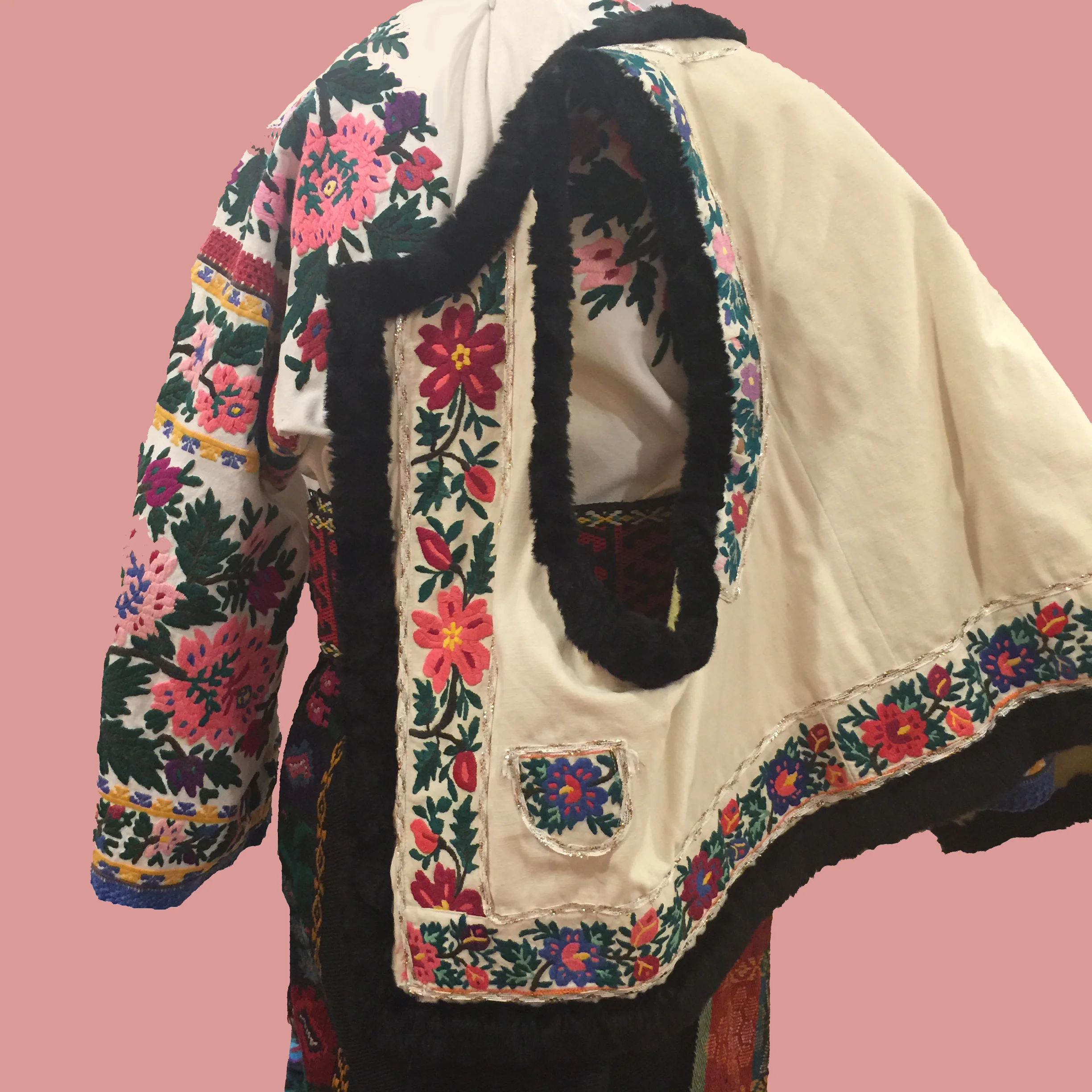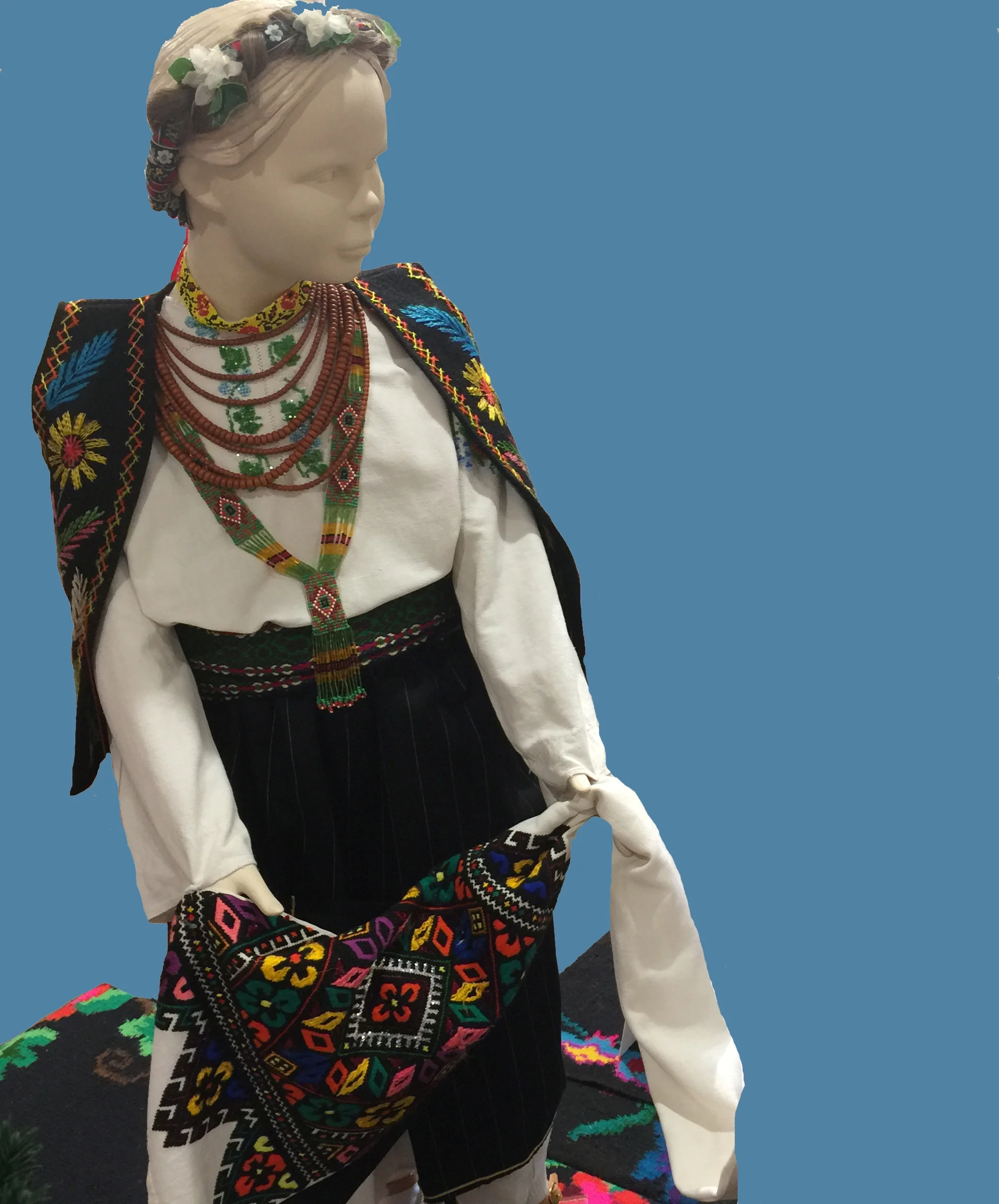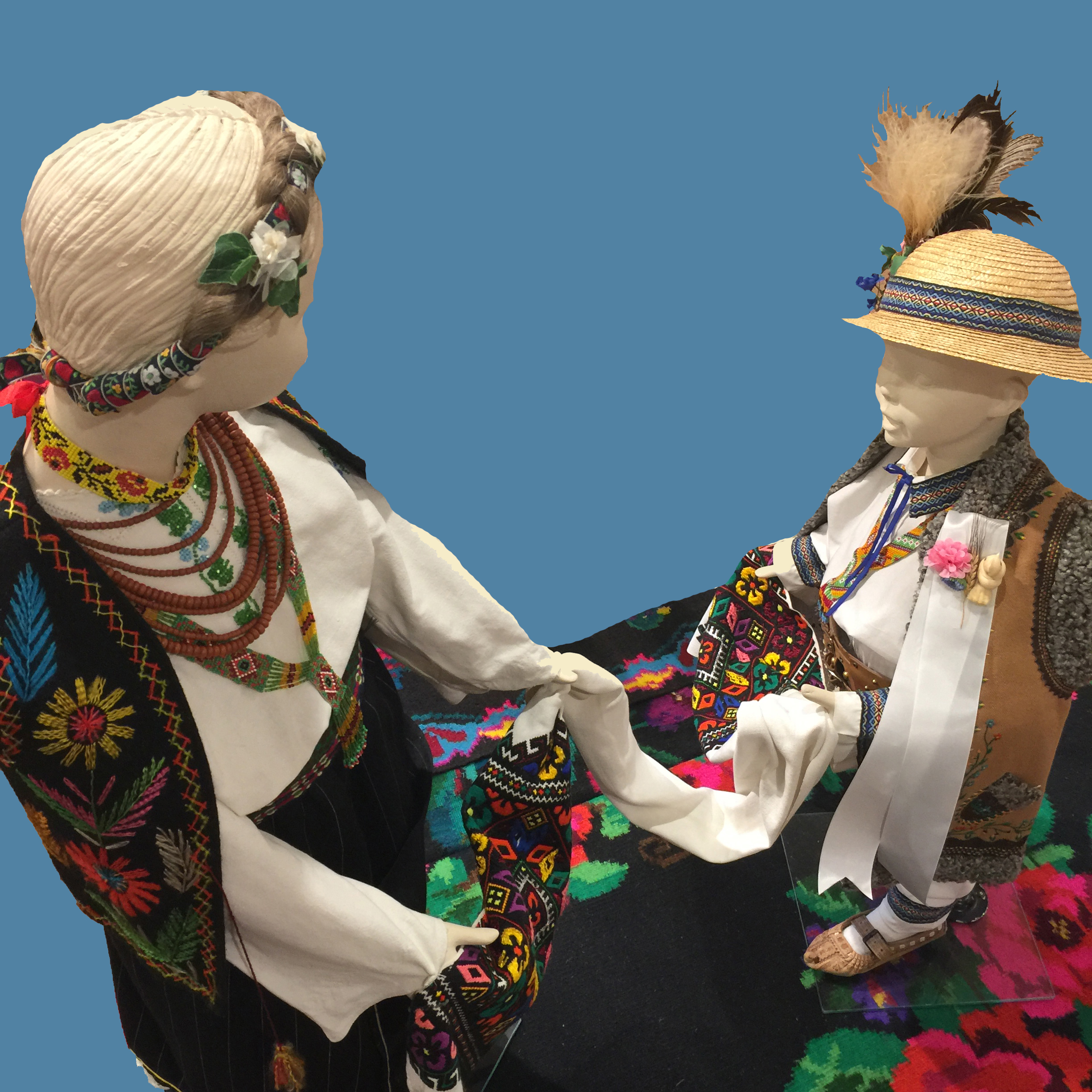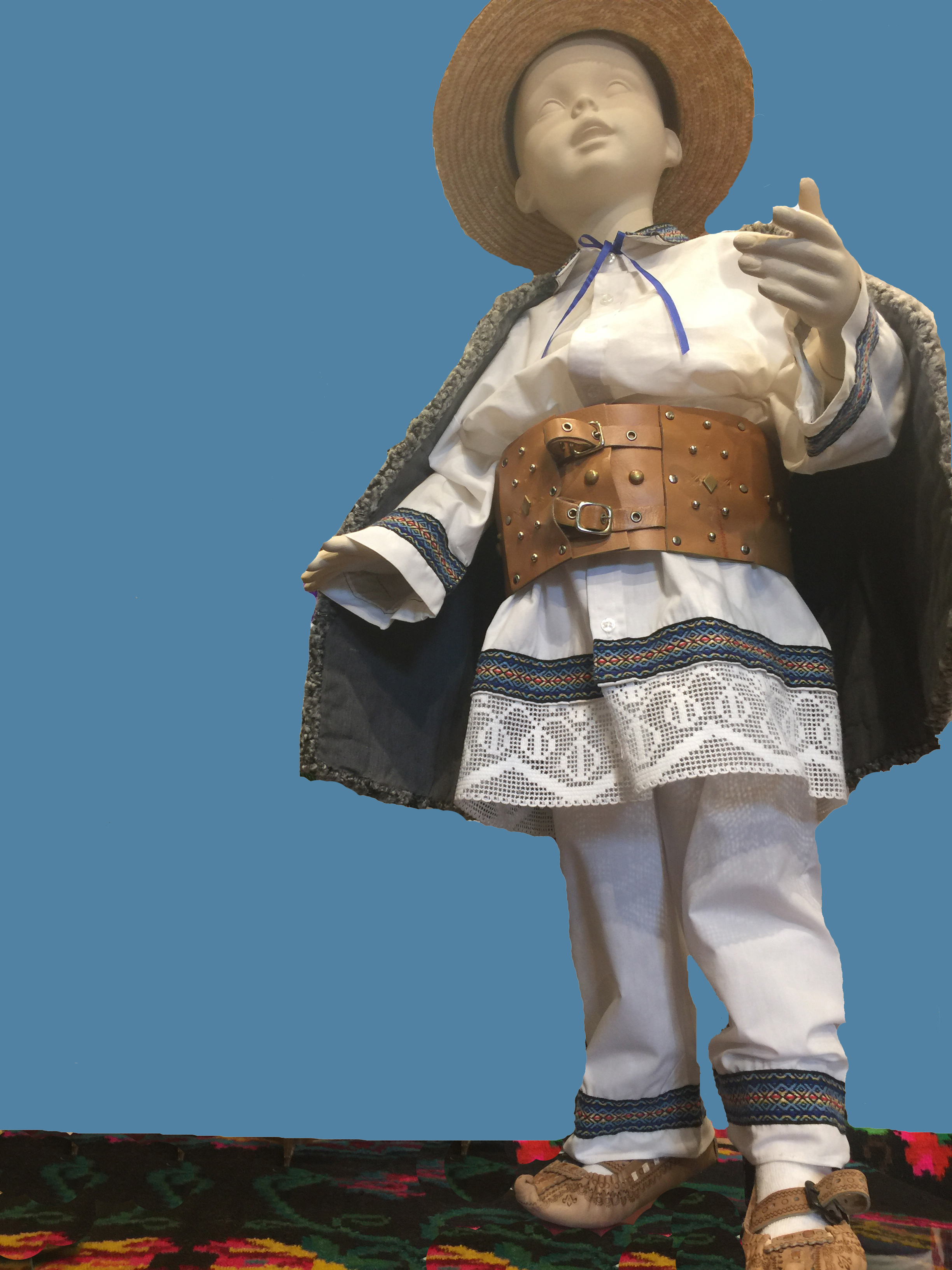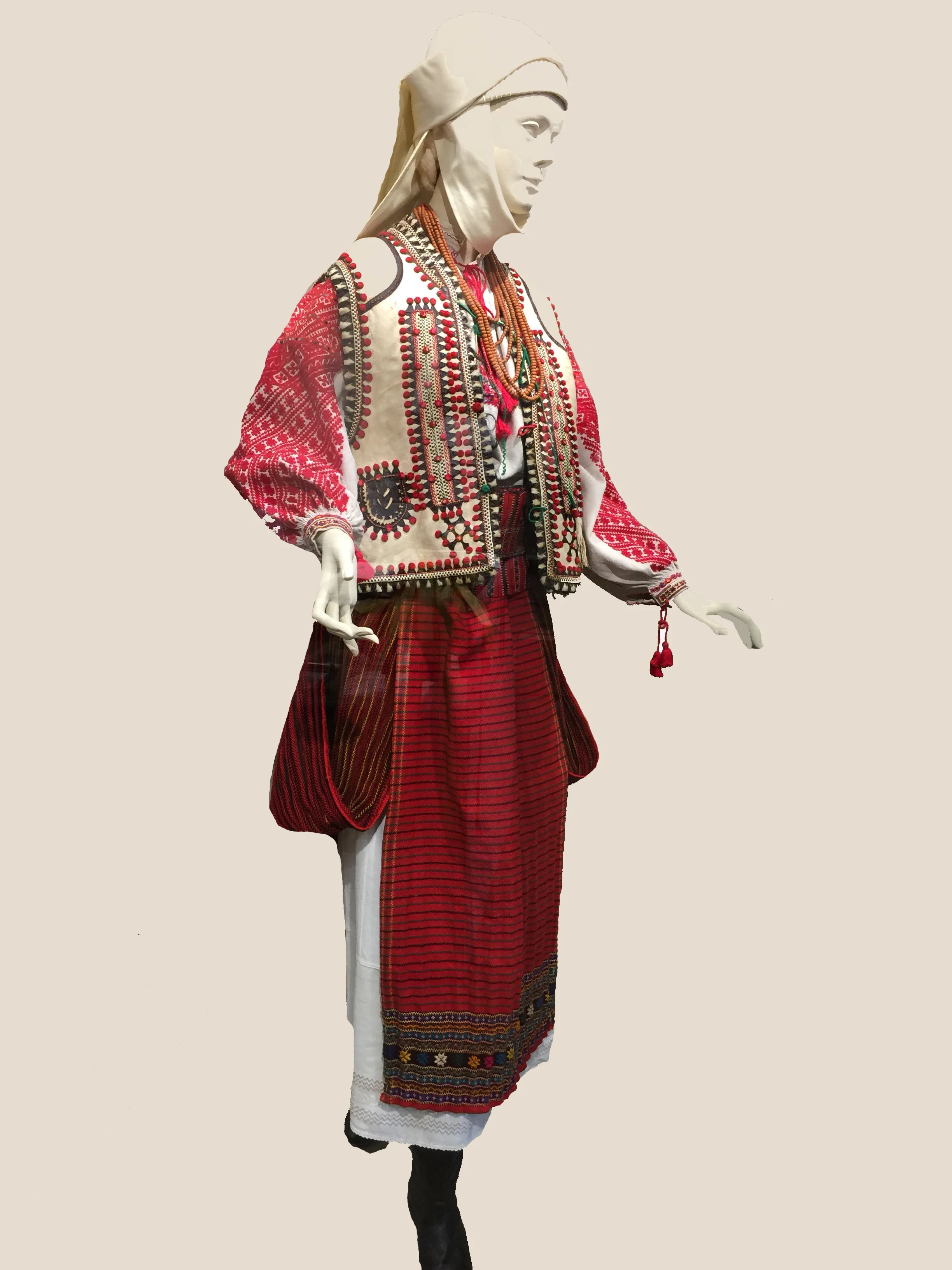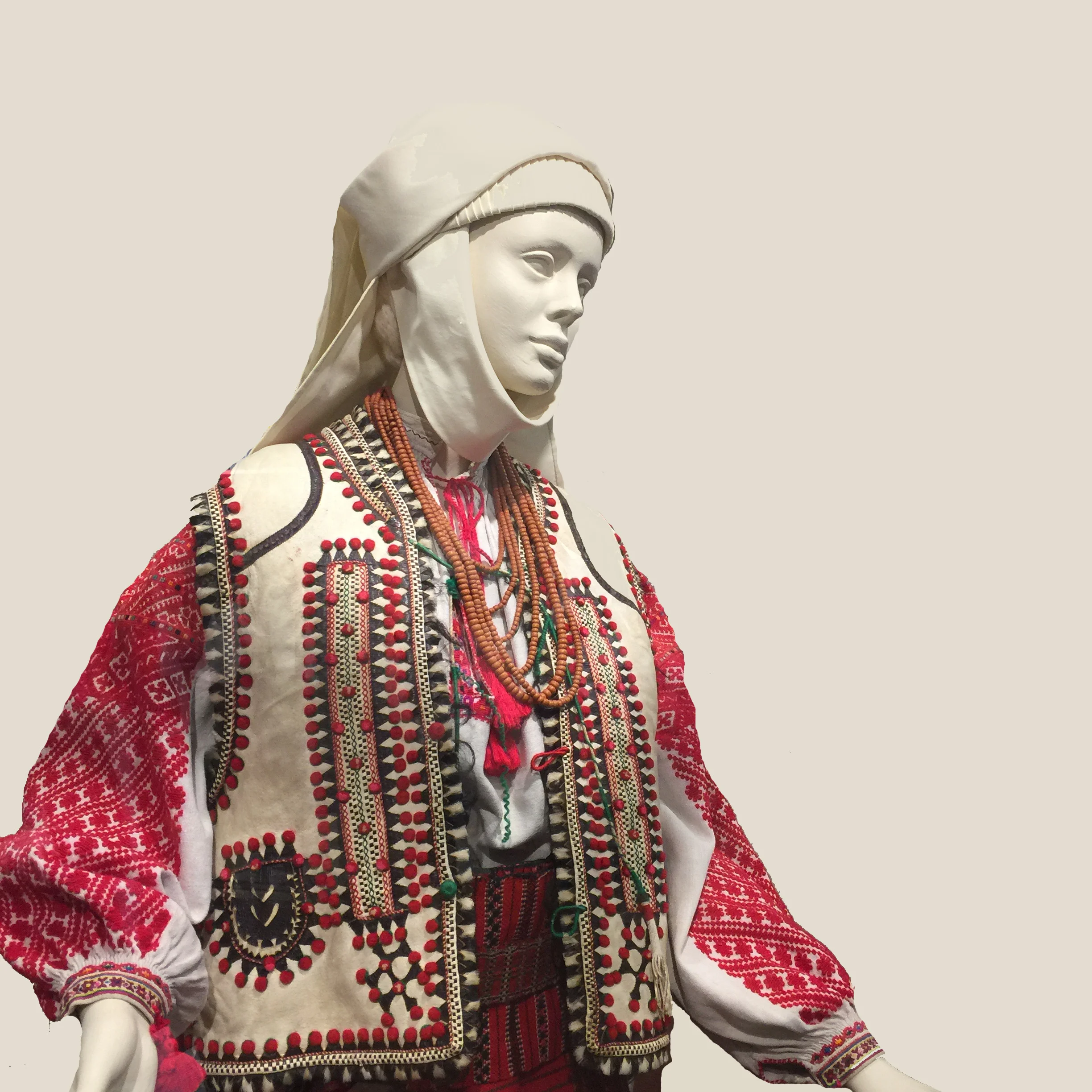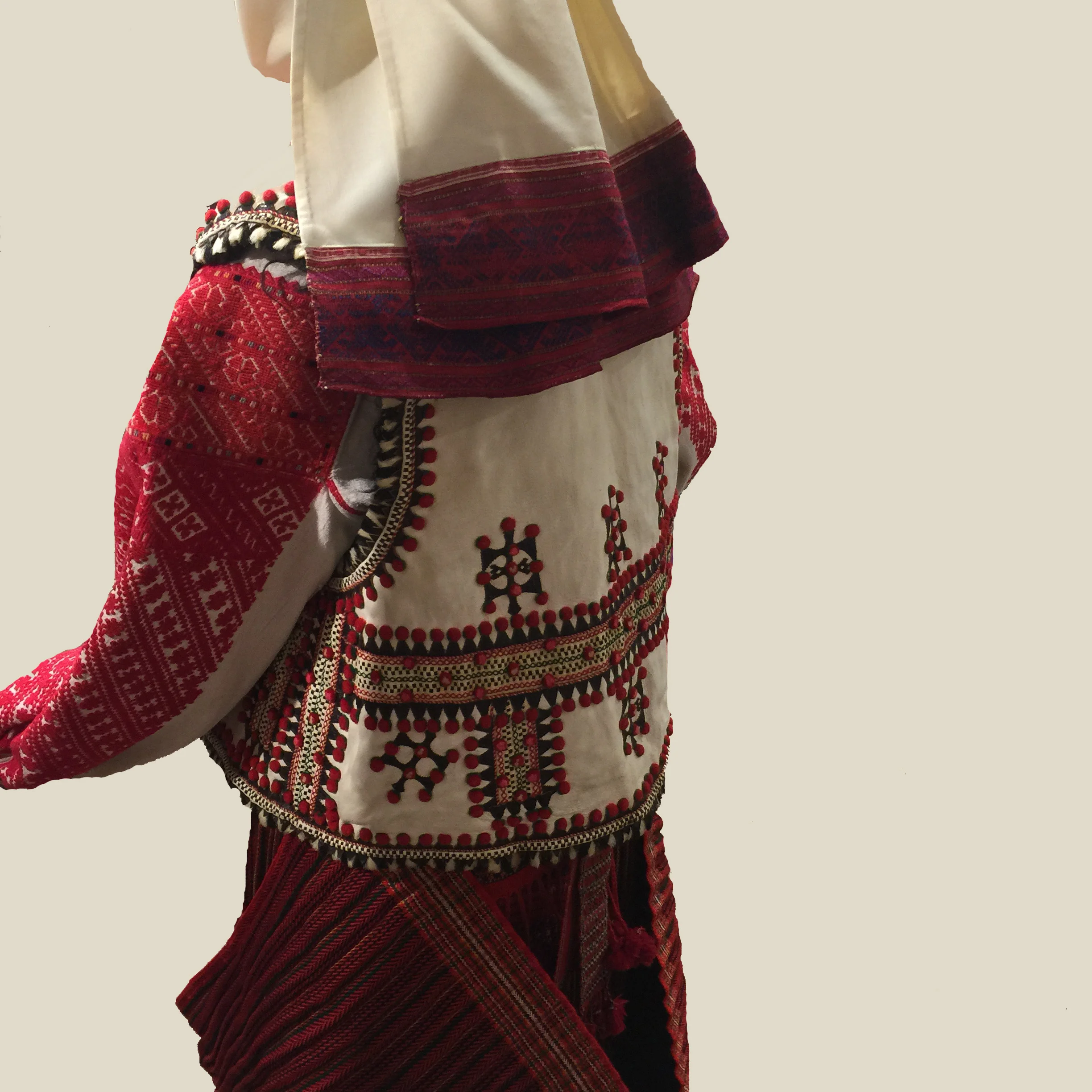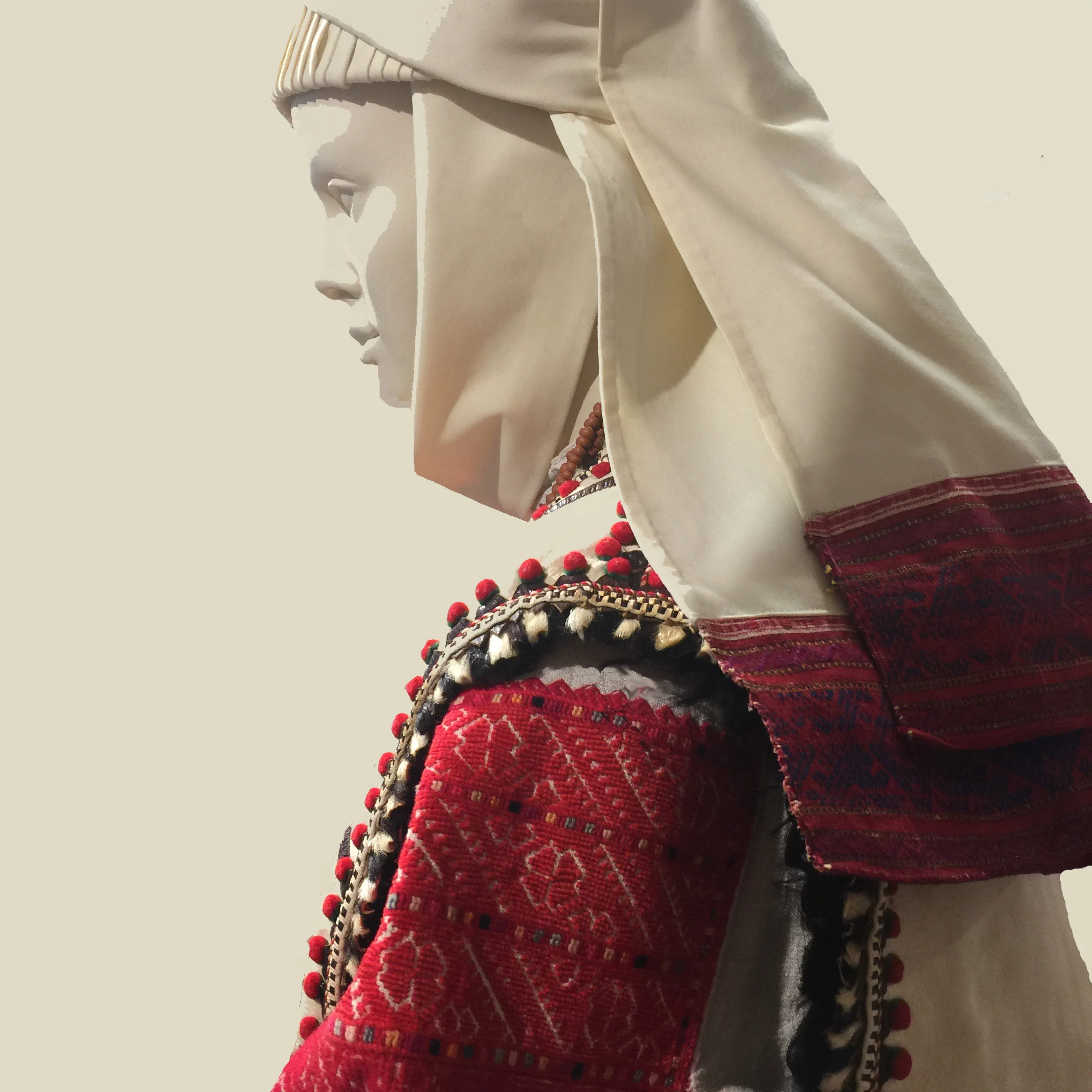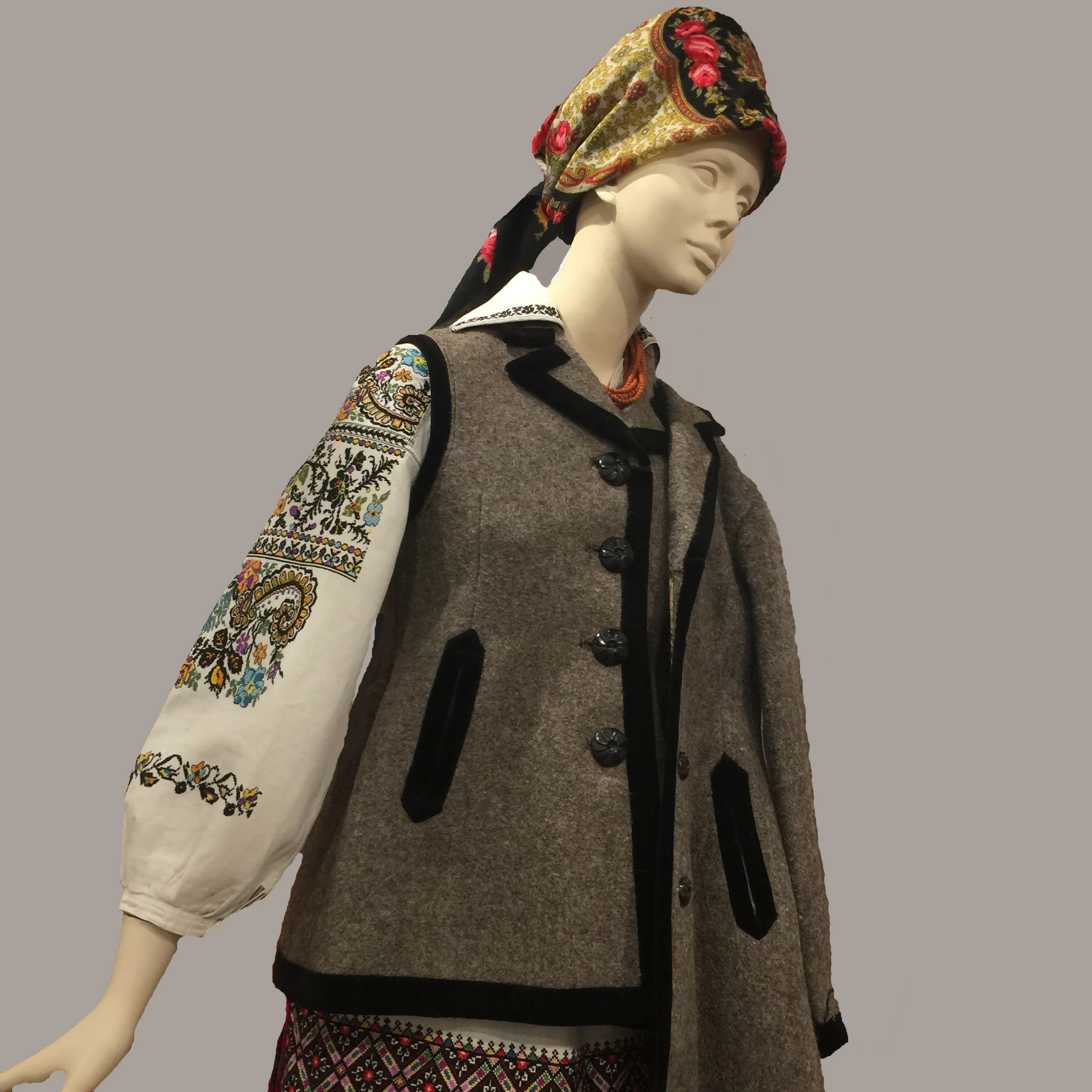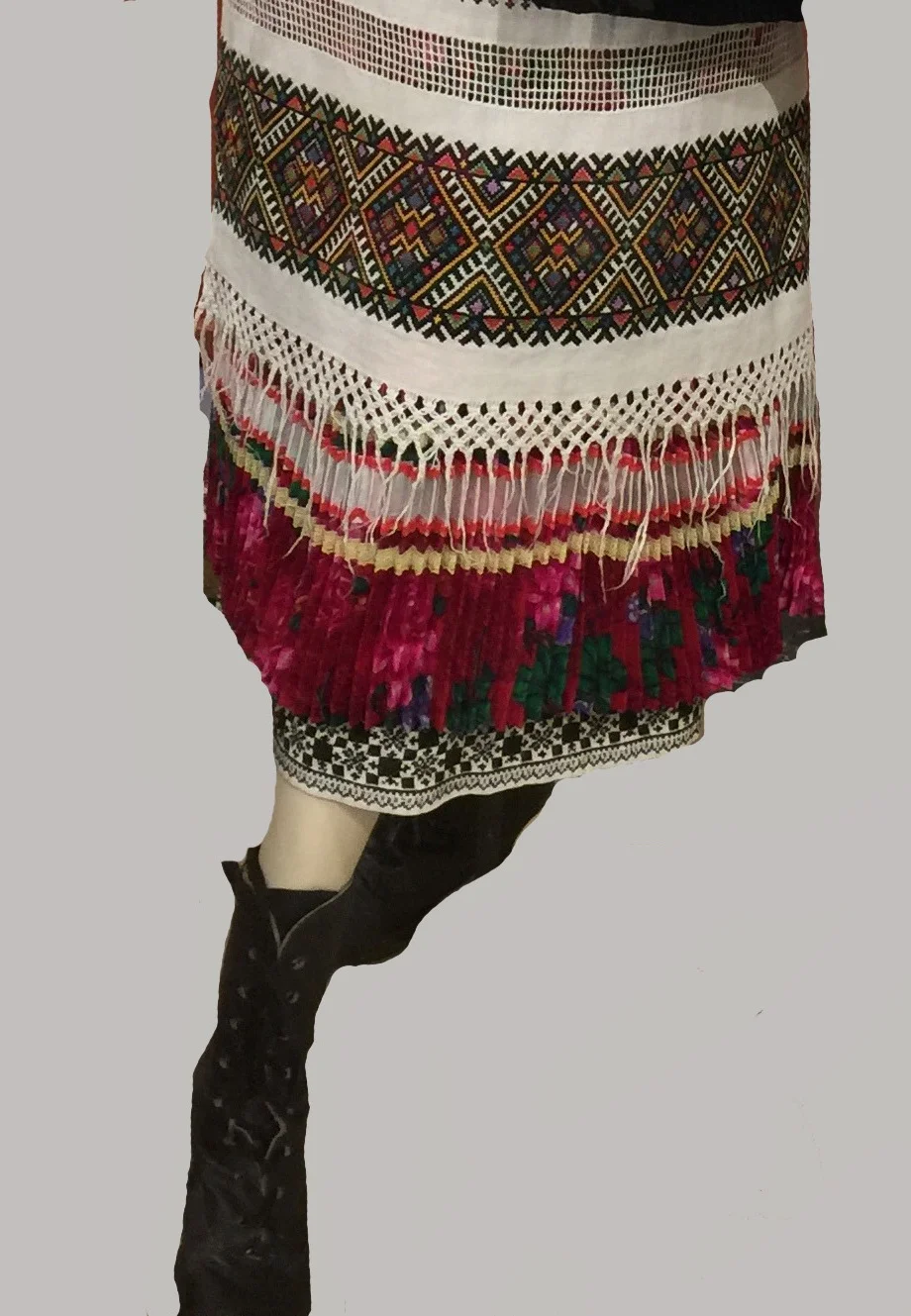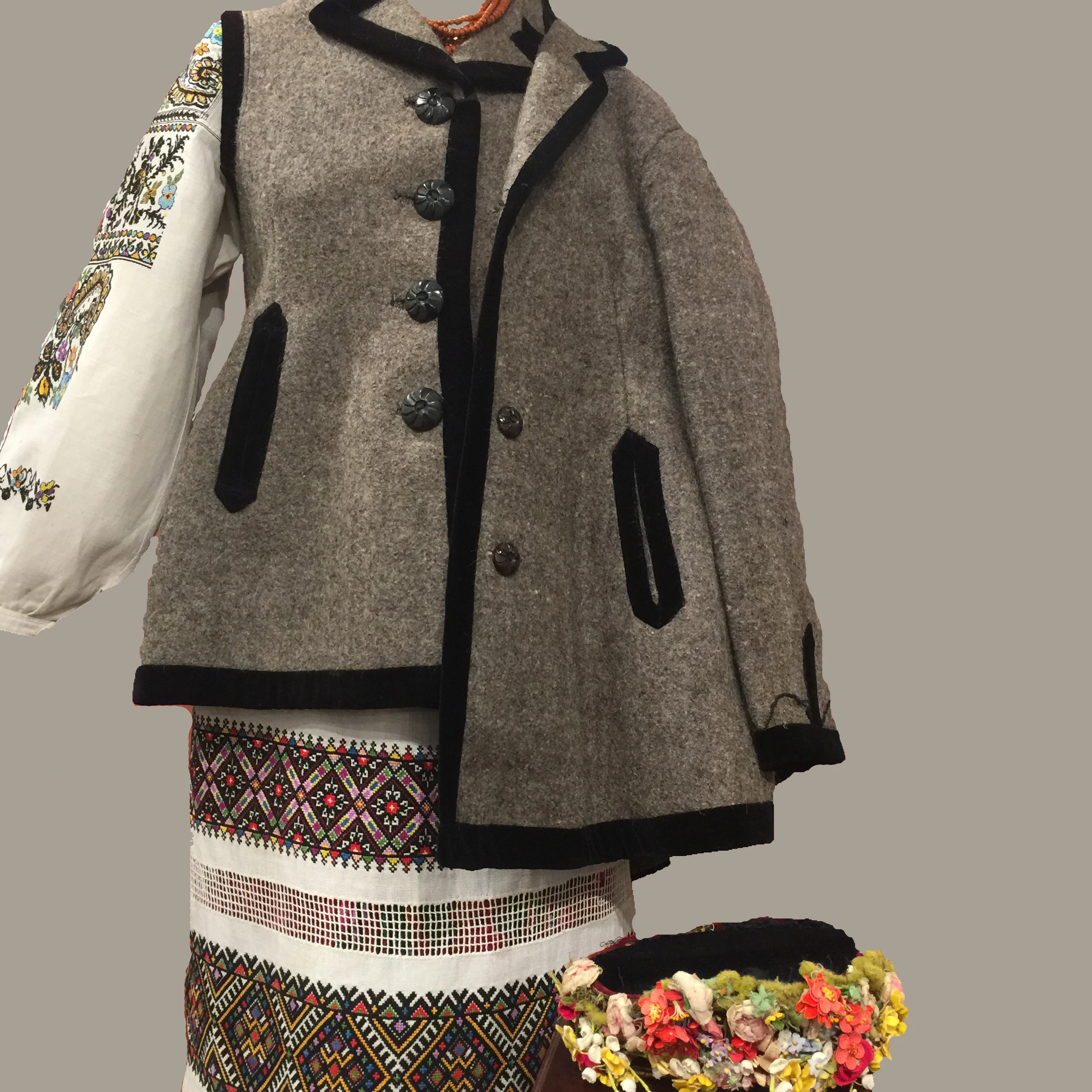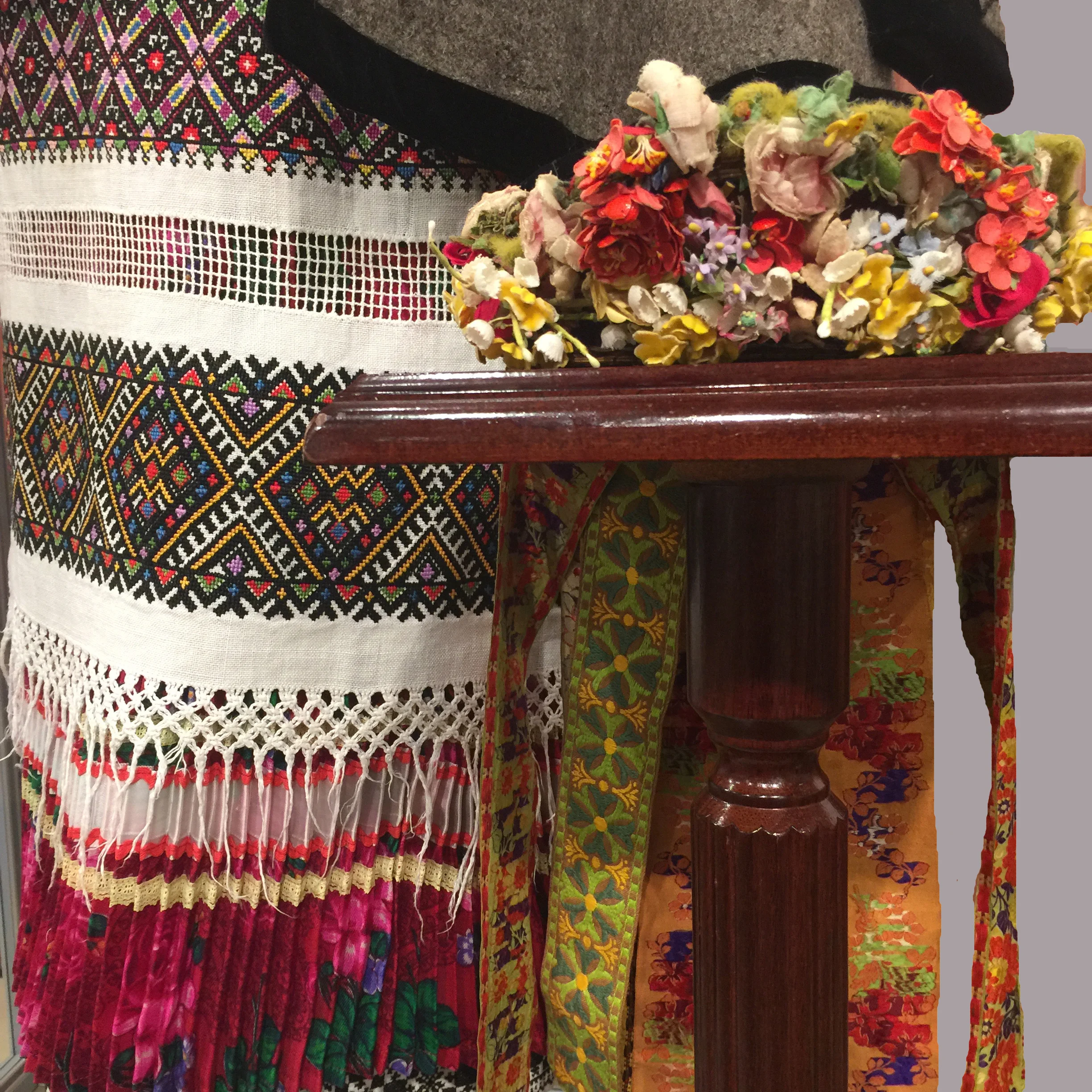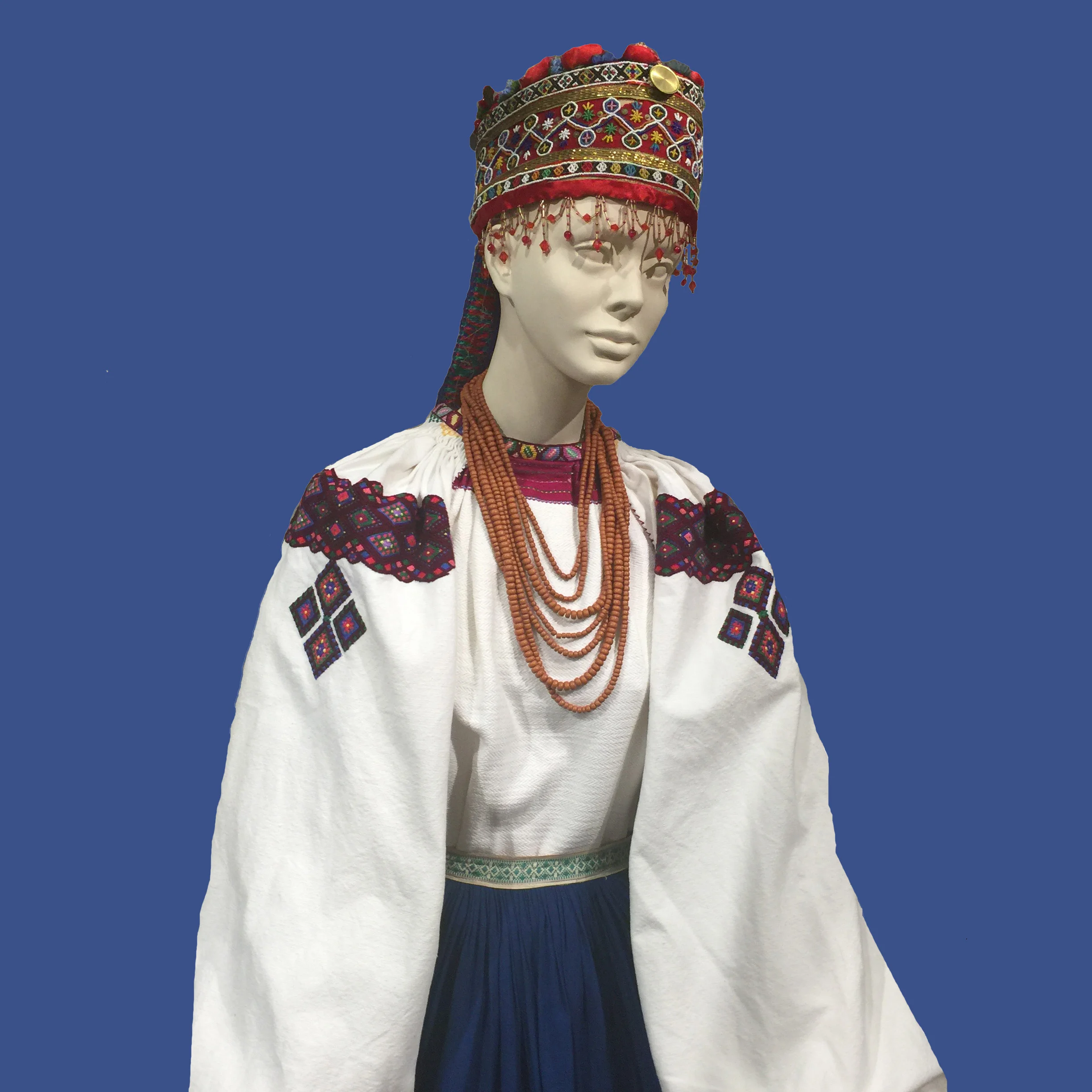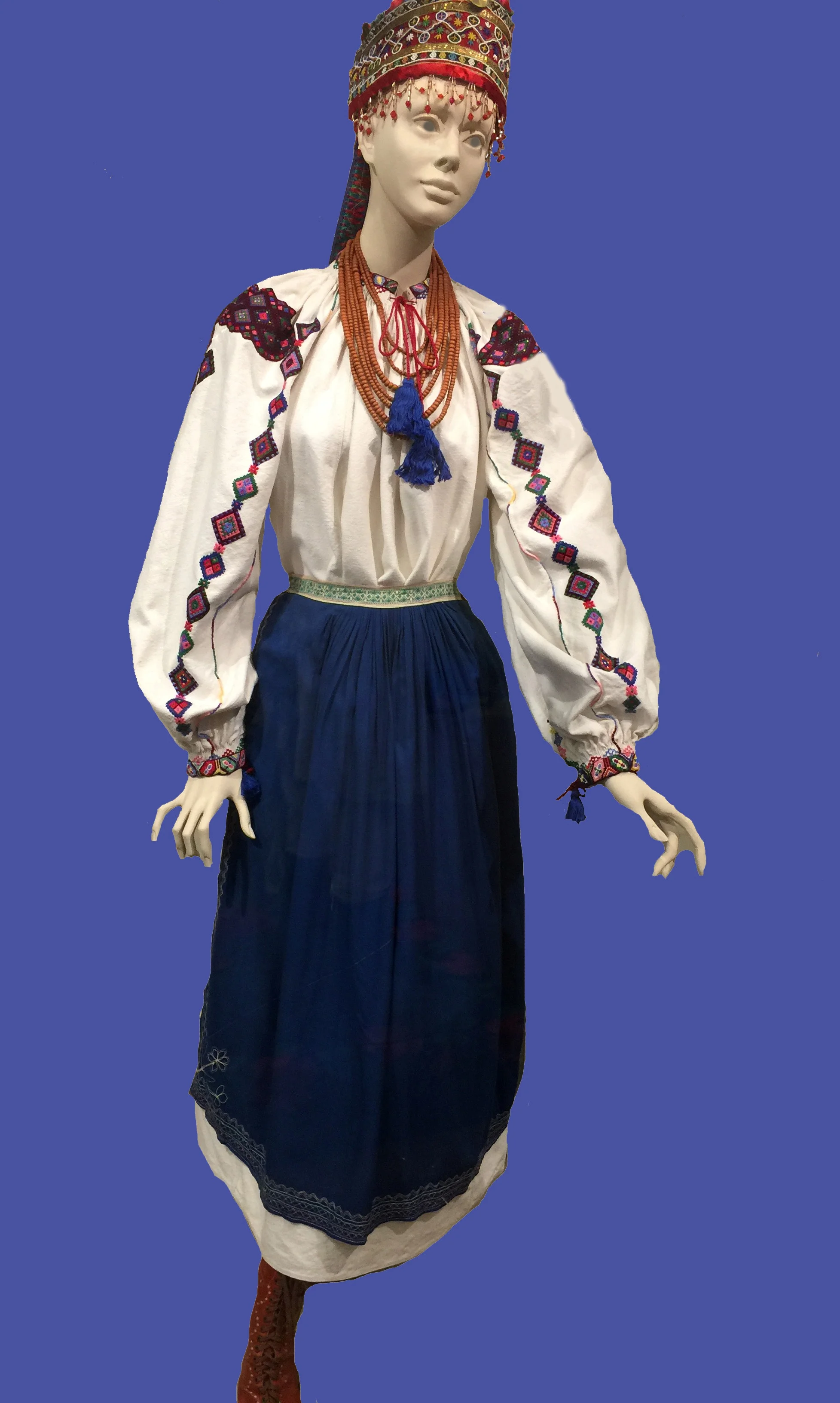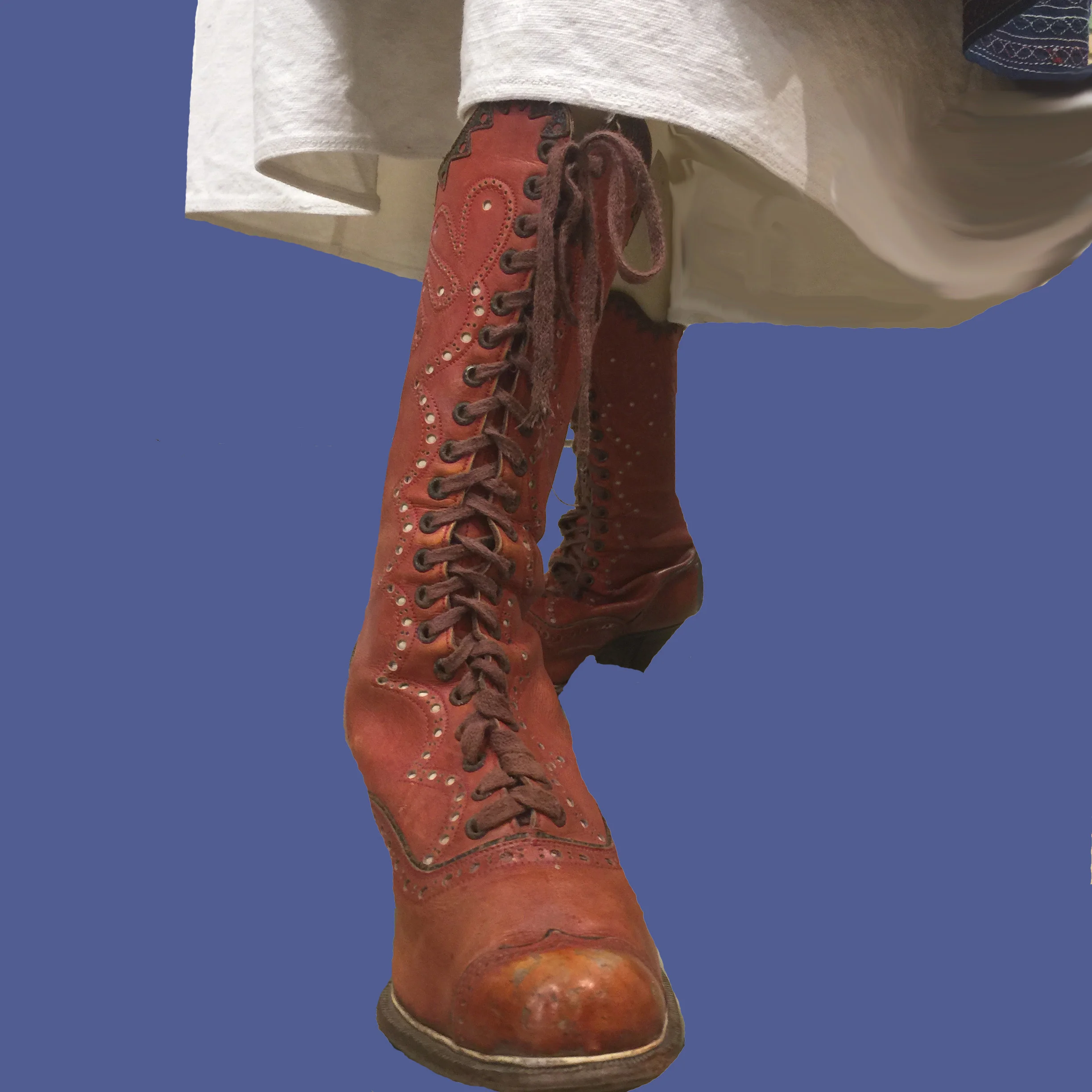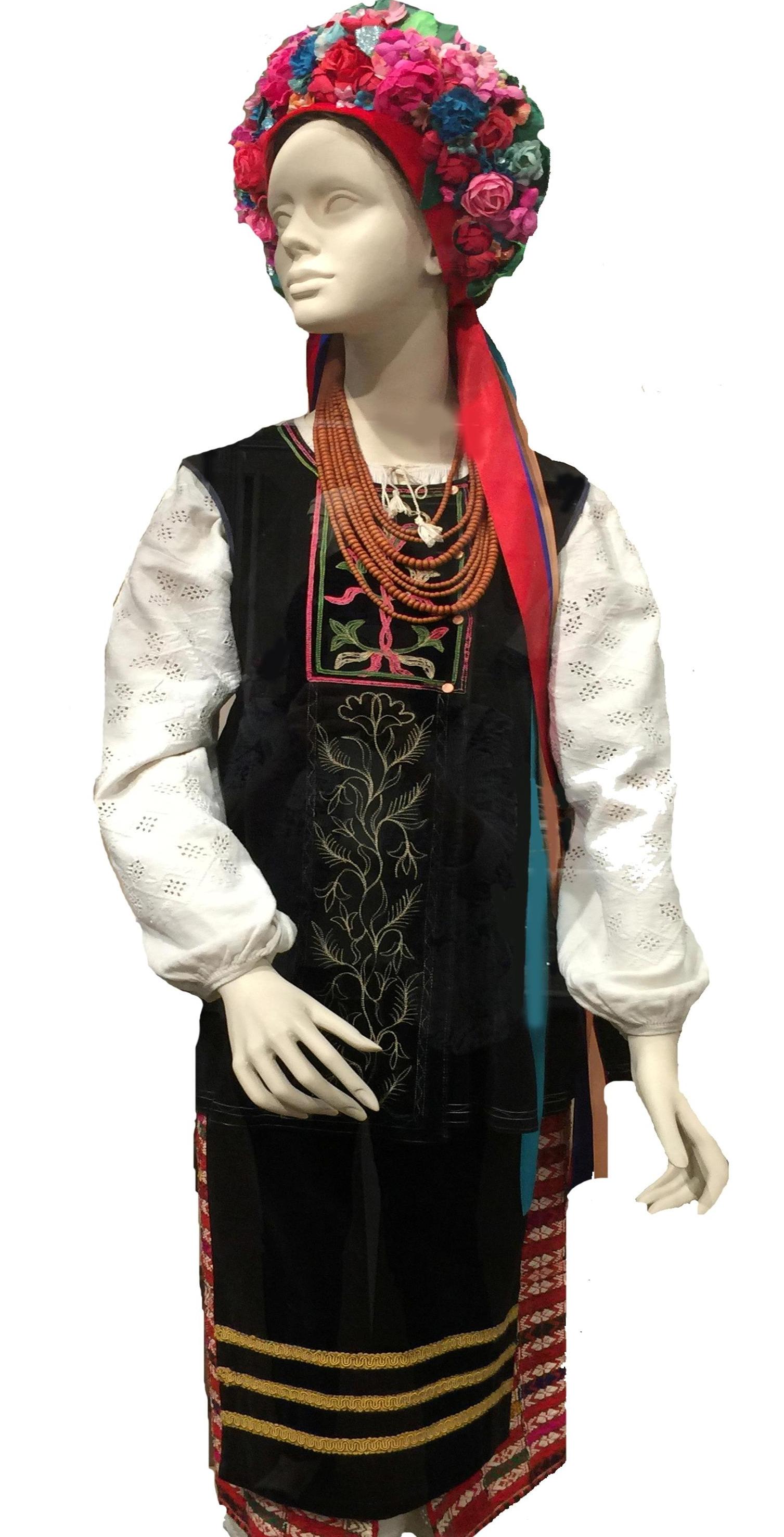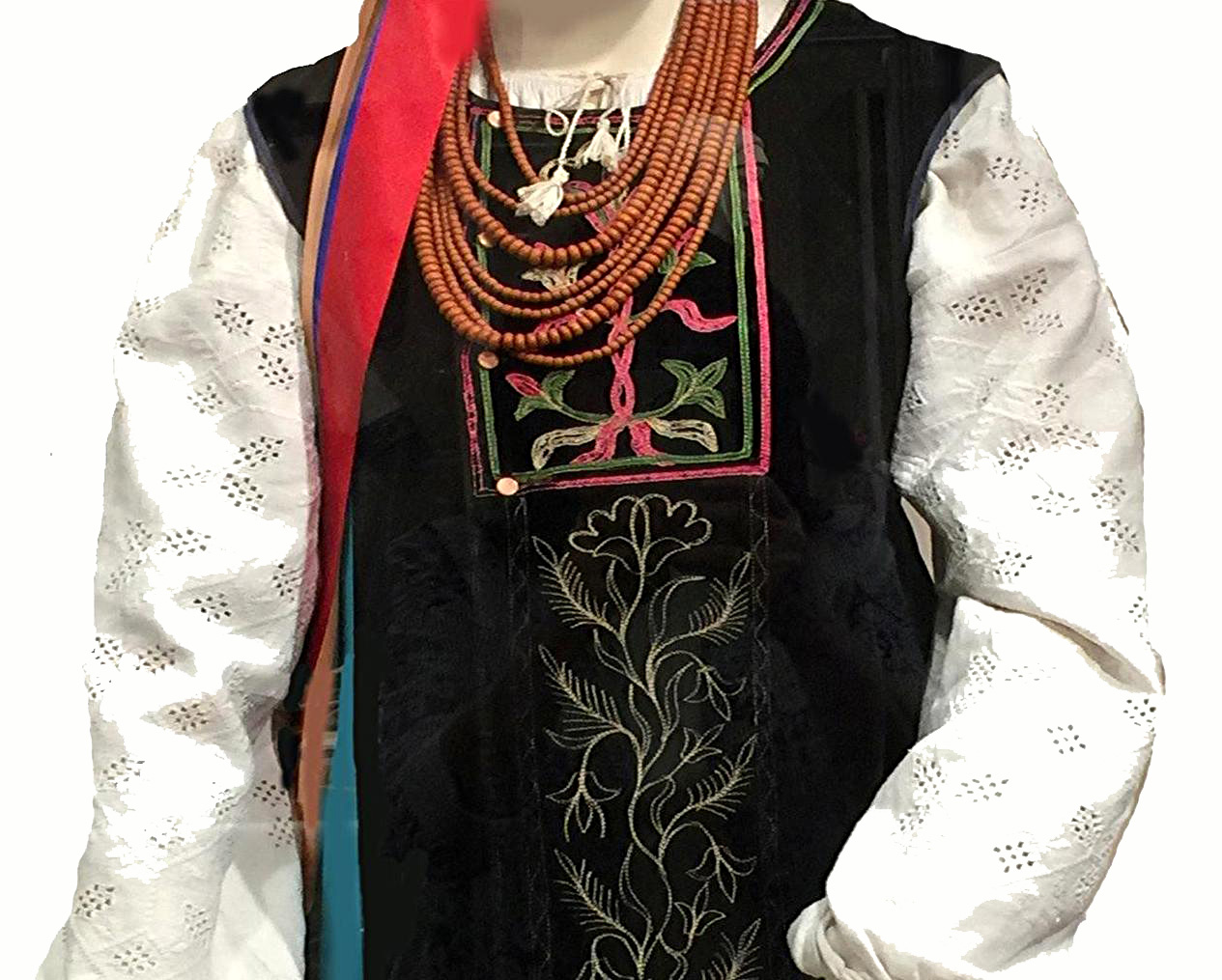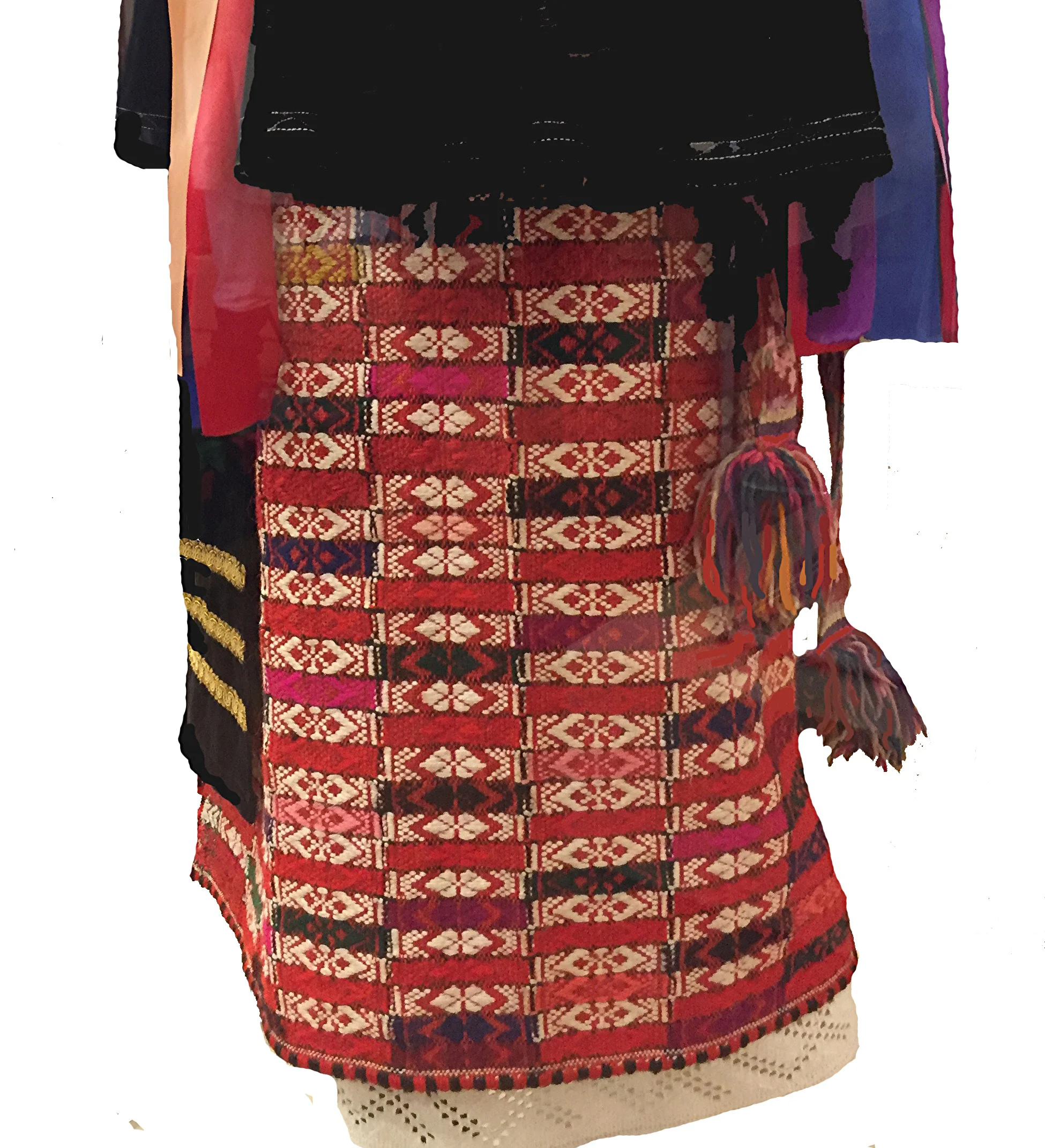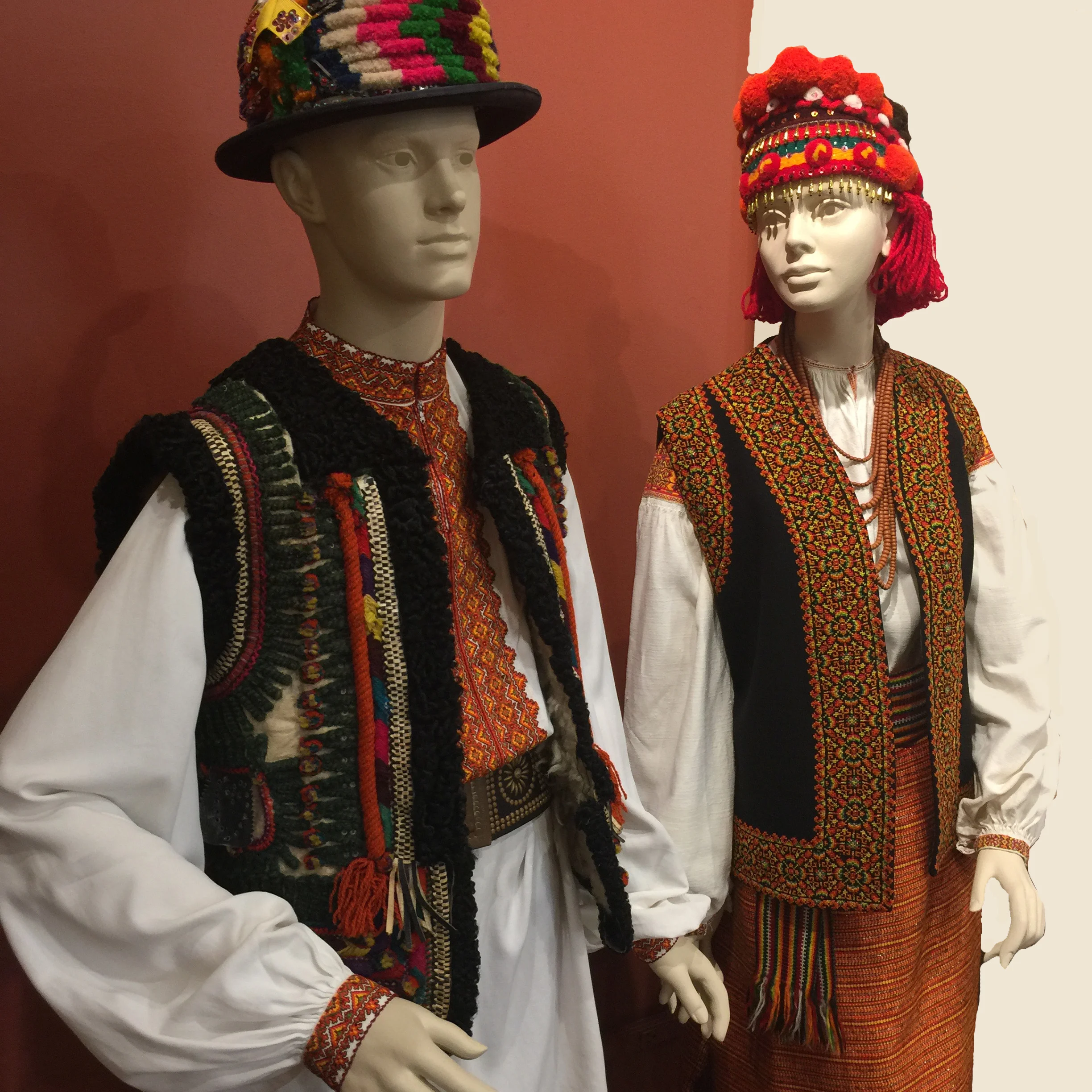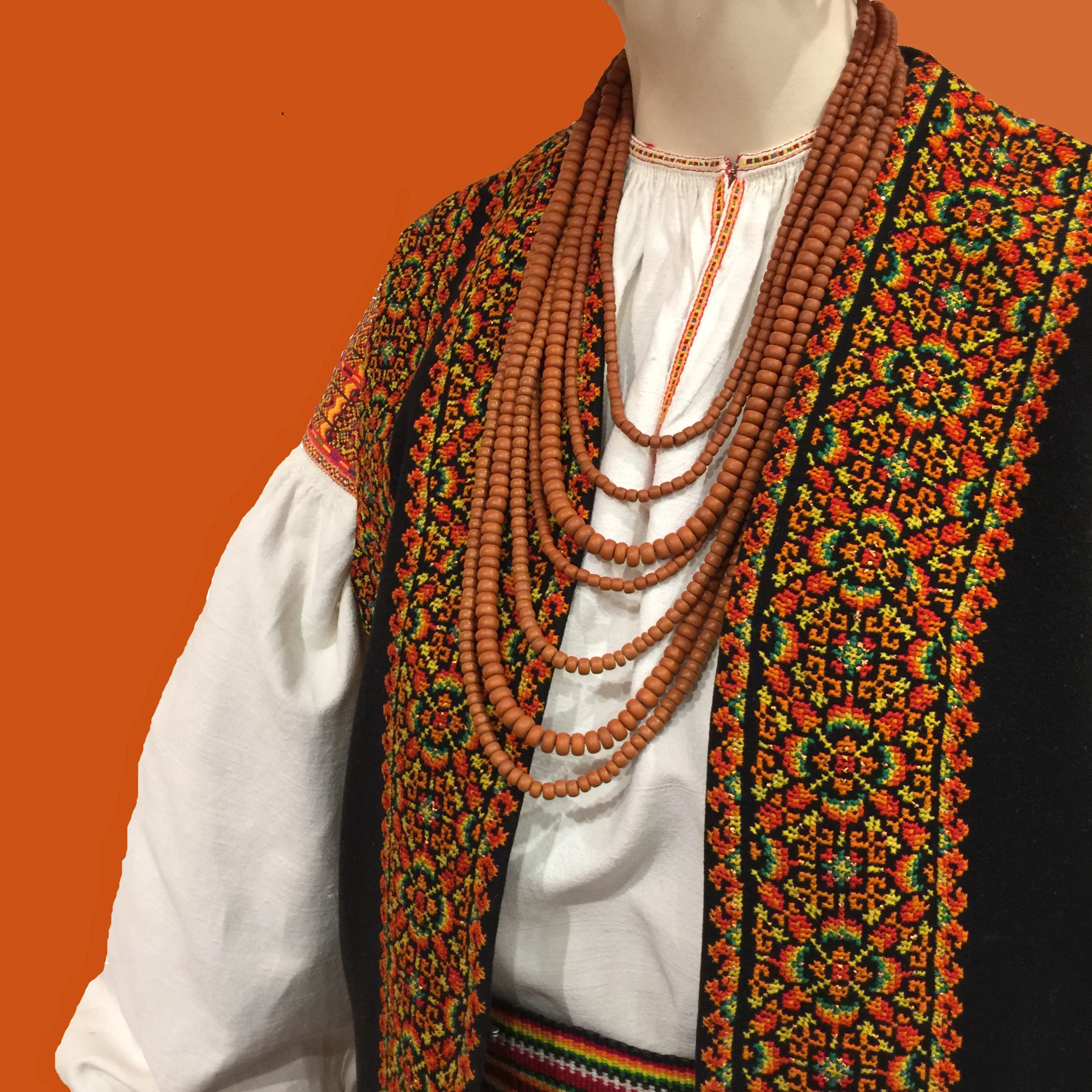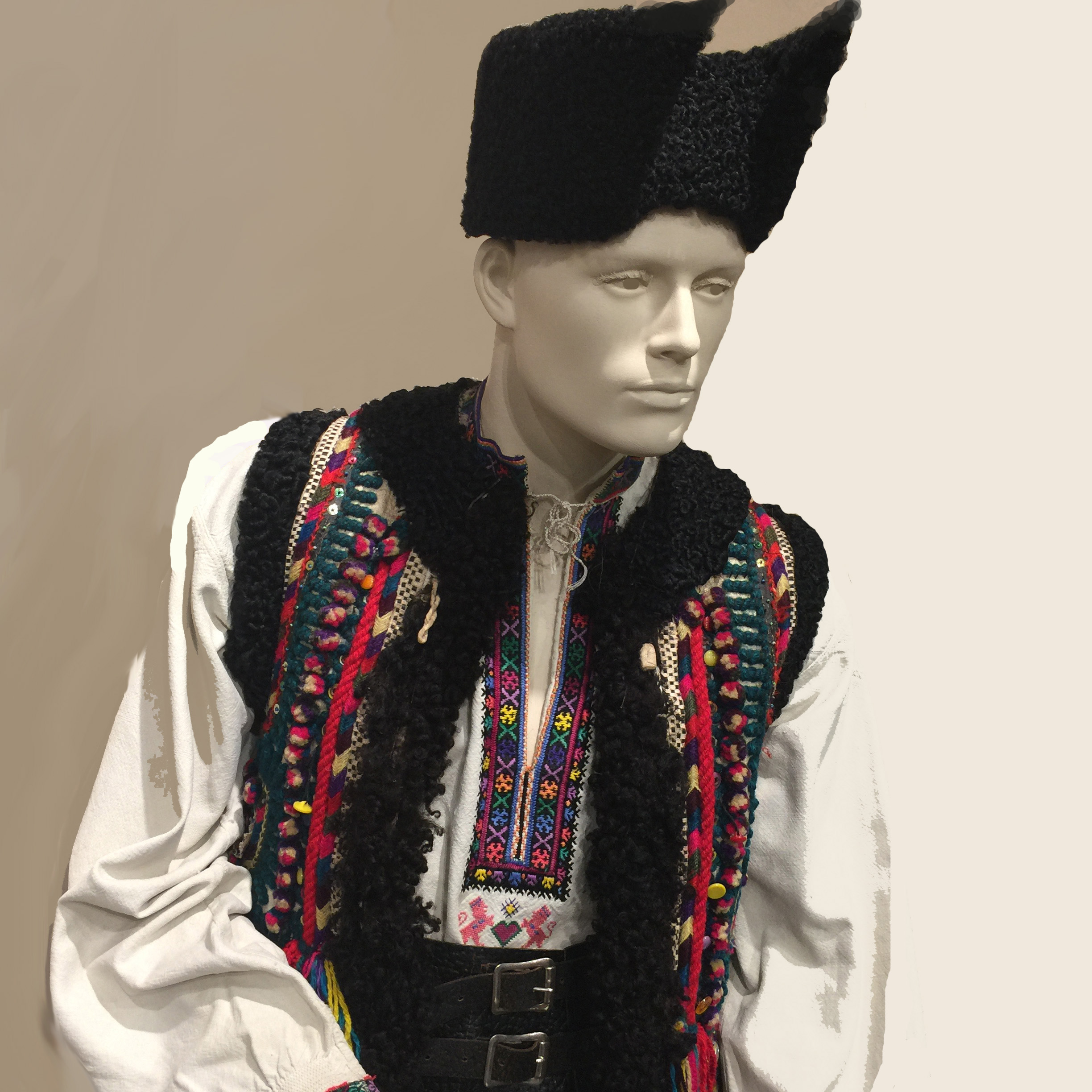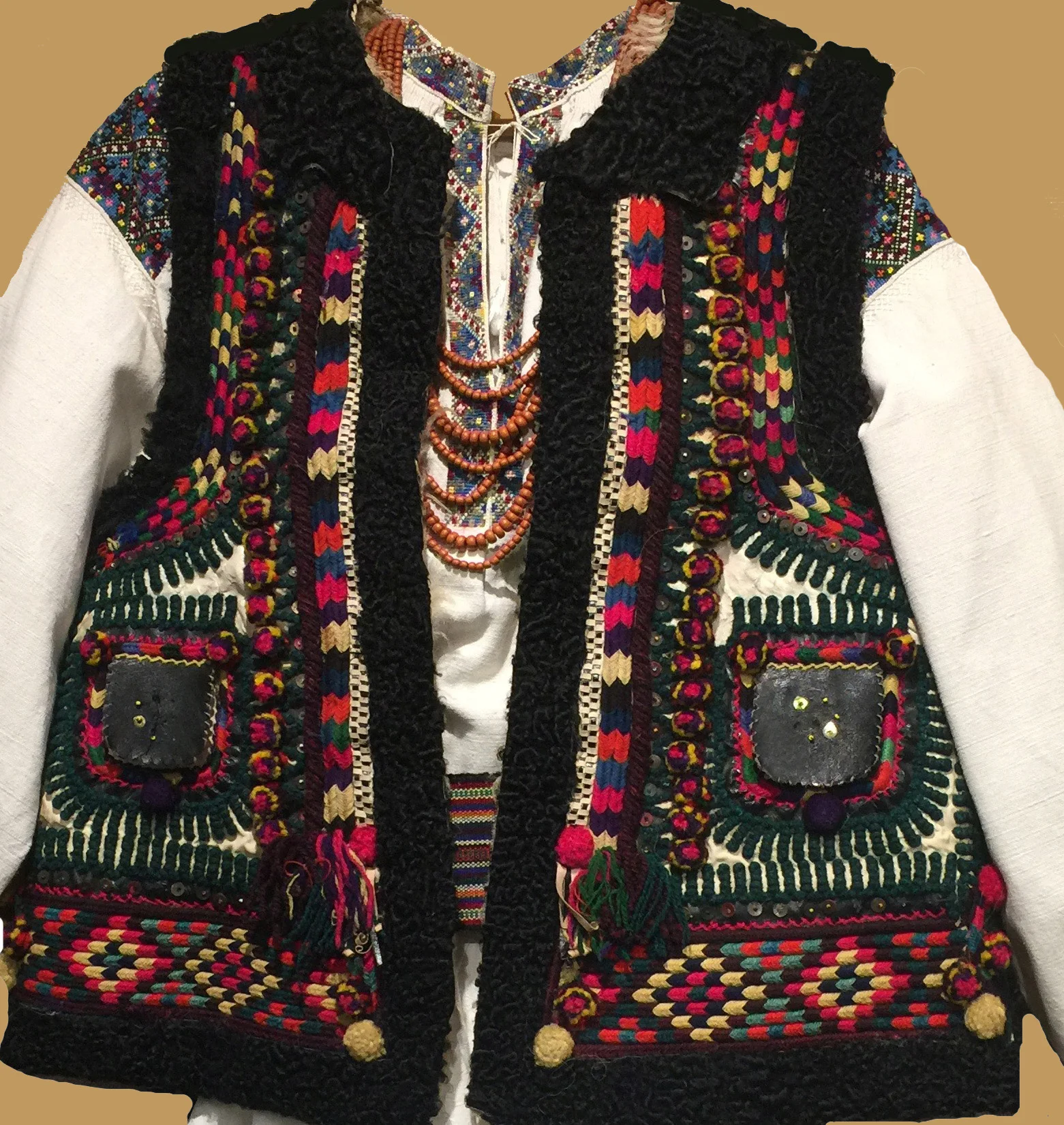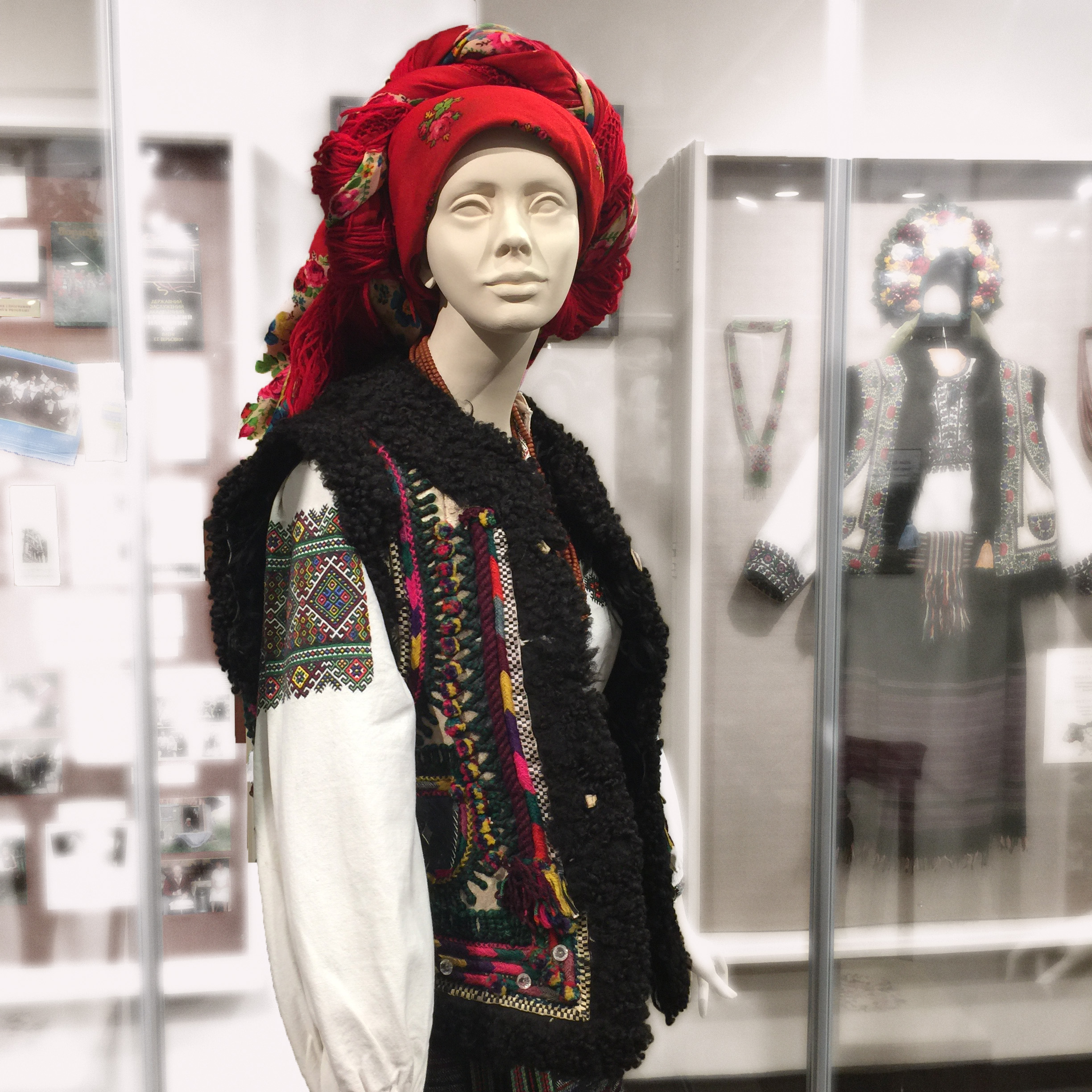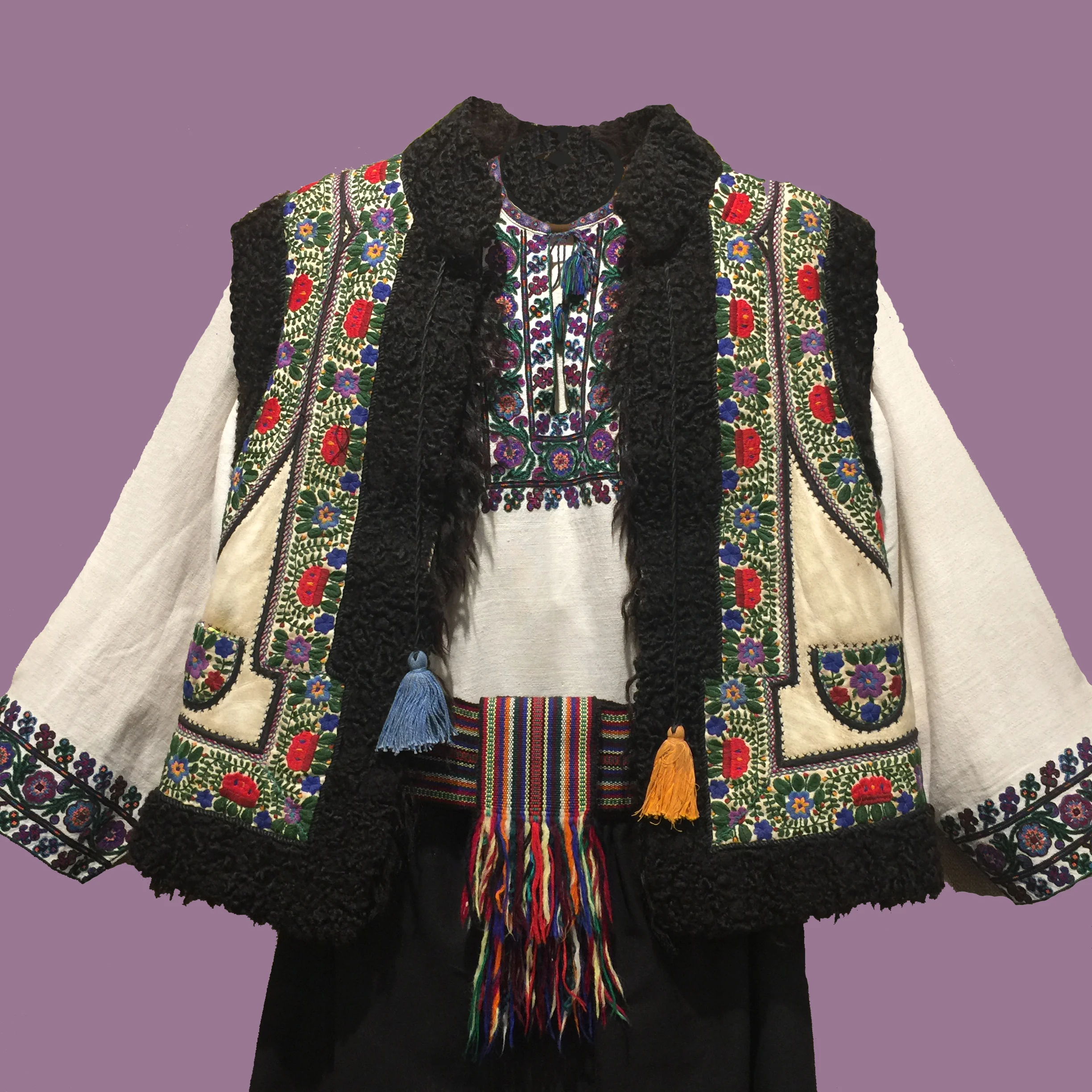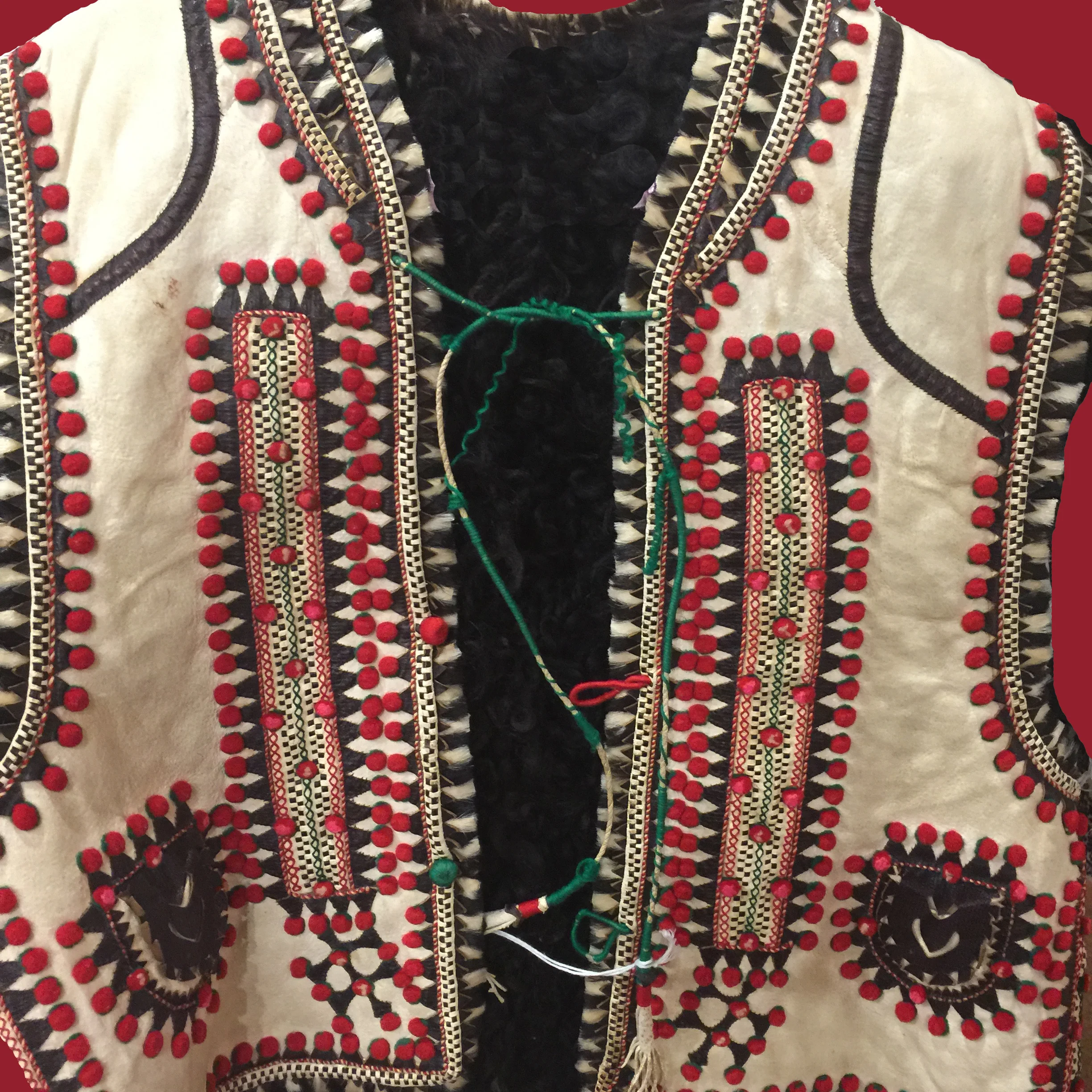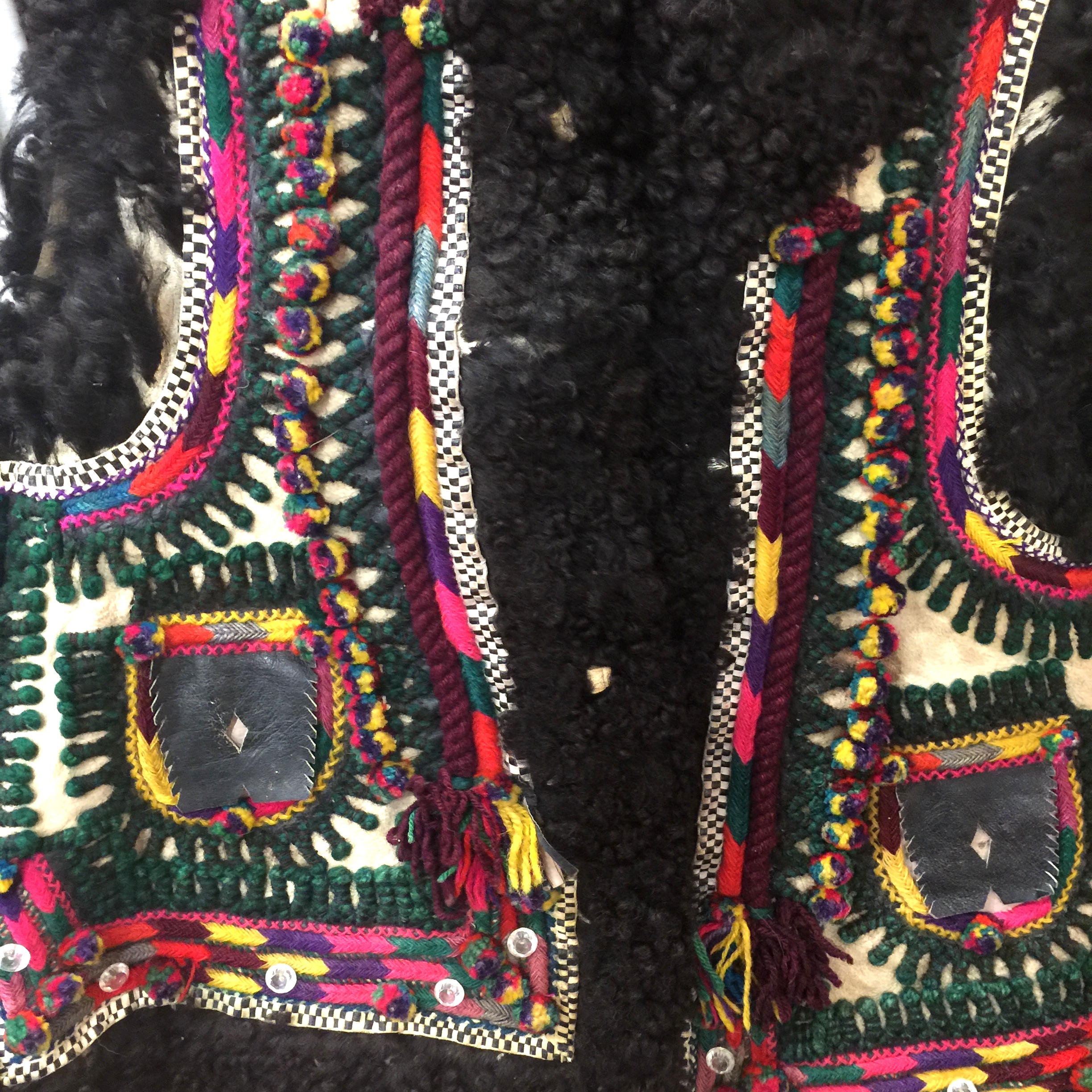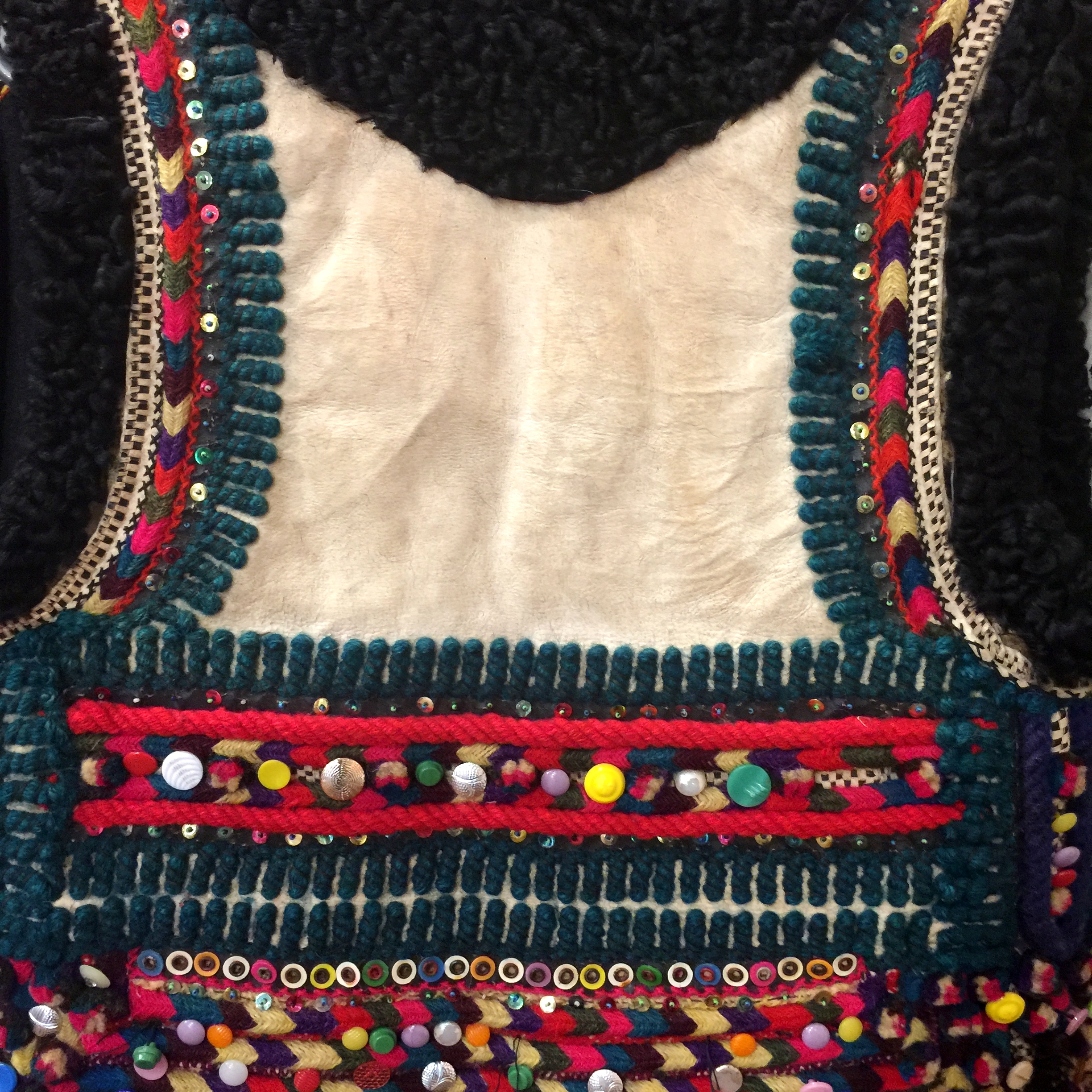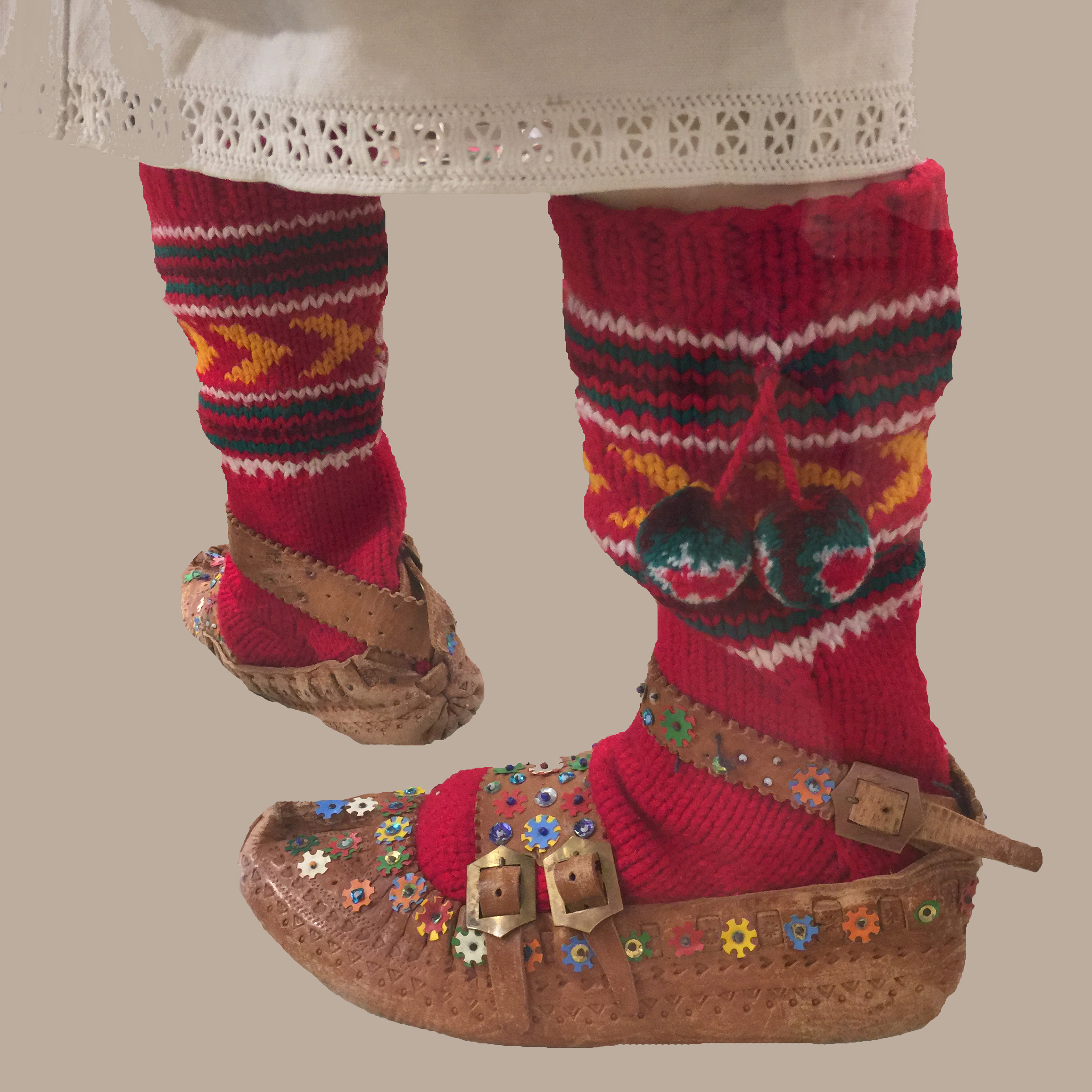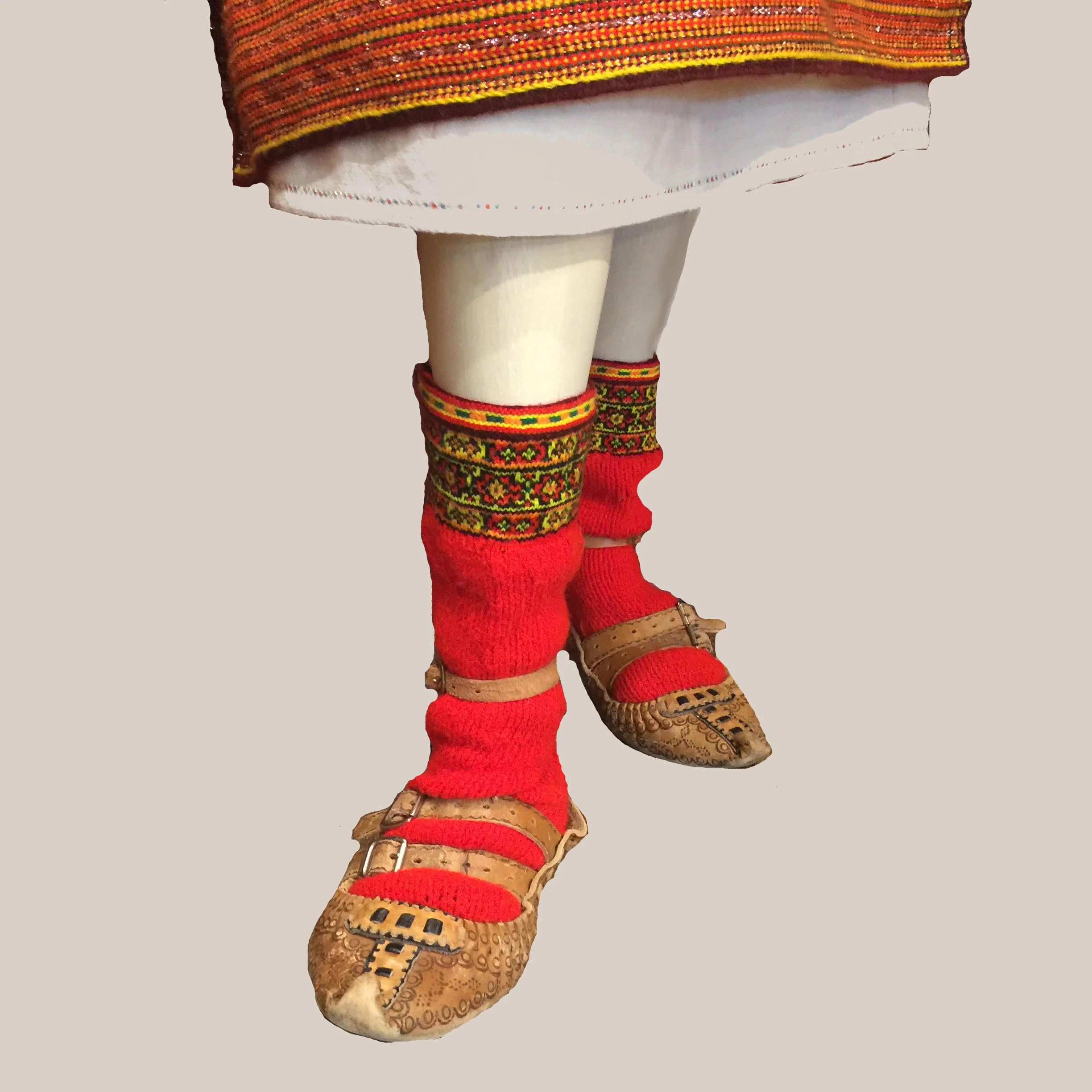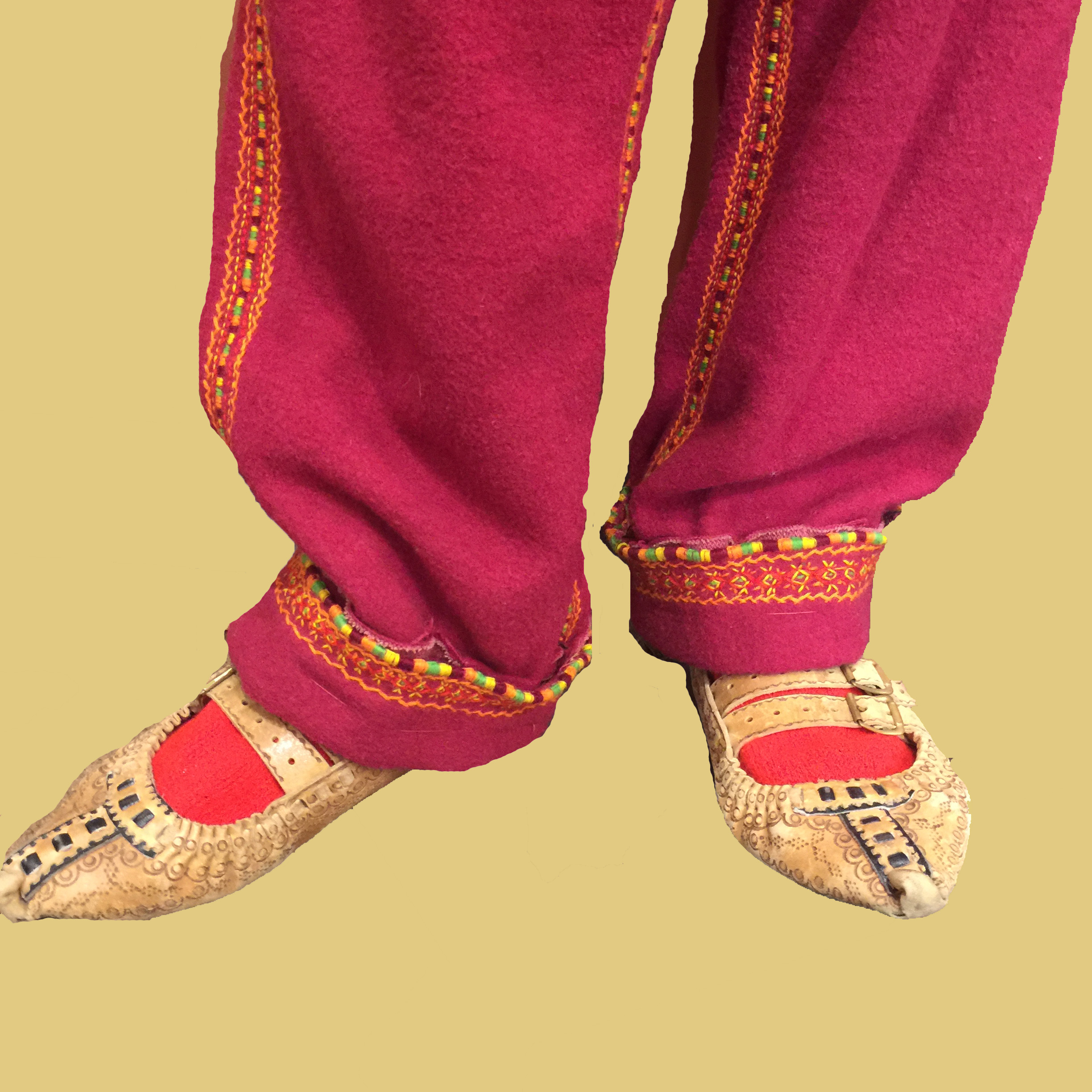Treasures Rediscovered and Shared
May - September 2018
This exhibit told the story of how one woman’s passion for Ukrainian dance was inspired and shaped by her grandmother’s collecting and research activities.
Treasures Rediscovered and Shared explored Danovia Stechishin-Stefura’s ethnographic and folkloric research in Ukraine. A renowned choreographer and Ukrainian folk dance and costume expert, she was influenced by her grandmother, Savella Stechishin, who traveled to Ukraine and Europe in the 1920s on research trips to collect, among other items, Ukrainian embroidery samples. Danovia built on this familial legacy through her own extensive trips between 1984-95 when she visited over 100 remote villages to collect Ukrainian folk and dance costumes.
This is a small selection of Savella Stechishin’s personal collection of embroidery samples from various regions of Ukraine that she visited on her research trips. Her publication Art Treasures of Ukrainian Embroidery (1950) was based on her avid interest in Ukrainian folk arts and her determination to make them an integral part of Canadian culture.
The centrepiece of the exhibit was a wedding party dressed in antique costumes from the region of BUKOVYNA, Chernivtsi Oblast, Novoselytsia Raion, Village of Toporivtsi. A common trademark of Bukovynian costume is the intricate embroidery and more specifically the beadwork. In these examples the embroidery has been accomplished with thousands of tiny crystal beads creating this luxe look. These beautiful garments were worn by Danovia and her husband, Scott, at their wedding.
These incredibly exquisite costumes also from the region of BUKOVYNA were worn by the bridesmaids in the wedding party along with the children who are holding the embroidered “rushnyk” (ritual cloth). Bukovinian costumes typically have colourful floral motifs, many incorporating metallic threads.
An example of a woman’s attire from the historical area of POKUTTIA in the Horodenko region of the Ivano Frankivs’k oblast. Embroidery was executed in shades of red. Many of the stitches were done with heavy threads resulting in a raised design. The overskirt was wrapped around the waist from the back and held in place by sashes, one wide and one narrow. One or both corners were tucked into the sash for easy movement. Married women wore a headdress called a namitka, and necklaces of coral and other beads completed the outfit.
This ensemble comes from the ethnographic region of VOLYN (in the northwestern part of Ukraine) from the Sokal region in the L’viv oblast. It belonged to Danovia’s grandmother who brought it from the village of Tudorkovychi. The apron was embroidered by Savella Stechishin and the pleated skirt was researched by Danovia and Savella and recreated for this costume.
This costume comes from ZAKARPATTIA, a region located in the south-west of Ukraine within the western part of the Ukrainian Carpathians and the Transcarpathian Lowland. The costume of Zakarpattia consists of a shirt which is smock-gathered at the neck and at the cuffs with colourful geometric design on the sleeves. The skirt is also smock-gathered into a waistband and usually has colourful embroidery at the waistband.
This very recognizable costume comes from the CENTRAL DNIPRO REGION (Poltava). This ethnographic area is the political centre of Ukraine whereas Ukrainian literary and cultural life began here in the 1700s. The costume of this area has become known as the “national” costume and is recognized worldwide as Ukrainian. The earlier-styled embroidered blouse or sorochka in central areas like Poltava was characterized by white-on-white embroidery, but as threads became commercially-produced, black and red patterns became popular, often in floral motifs that were cross-stitched. The dances from this area typically represent Ukrainian culture with the famous Hopak and Kozachok.
The HUTSUL region of Ukraine is located in the Carpathian Mountains. Although a rather small region, “Hutsulshchyna” occupies a huge place in Ukrainian culture, literature and song. As sheep and cattle breeding were major agricultural activities in this area, the Hutsul costume incorporates many components using leather, sheepskin and wool. The colours used vary from village to village. Some shirts have black outlined embroidery filled with bright colours while other regions incorporate orange, brown, green and yellow embroidery. The men wear hats of lambswool or highly decorated and ornate felt ones. Women, as well, wear highly ornate headpieces, usually with woven ribbons, braided cloth or wool, pompoms, tiny beads or coins.
The highly decorated sheepskin vest called a kyptar is very distinctive to the Hutsul costume. The cut is simple with straight sides or a slight flare at the bottom and the fleece is always worn on the inside. It is primarily decorated with applique, braid, buttons, embroidery, tassels and pom poms but the most characteristic element is the teeth or zubtsi found along the decorative panel on the edges. These examples come primarily from the Ivano Frankivs’k and Chernivtsi oblasts.
HUTSUL slippers or postoly were common in Ukraine in the early 20th century. Made from thick but soft rawhide, they were gathered or puckered along the inner edge and had a tipped nose. Beaded decorations were used as embellishments. Worn over soft woollen socks or kapchuri, they were held in place by leather straps or woollen laces that were wound around the ankle.
TREASURES
Rediscovered and Shared


